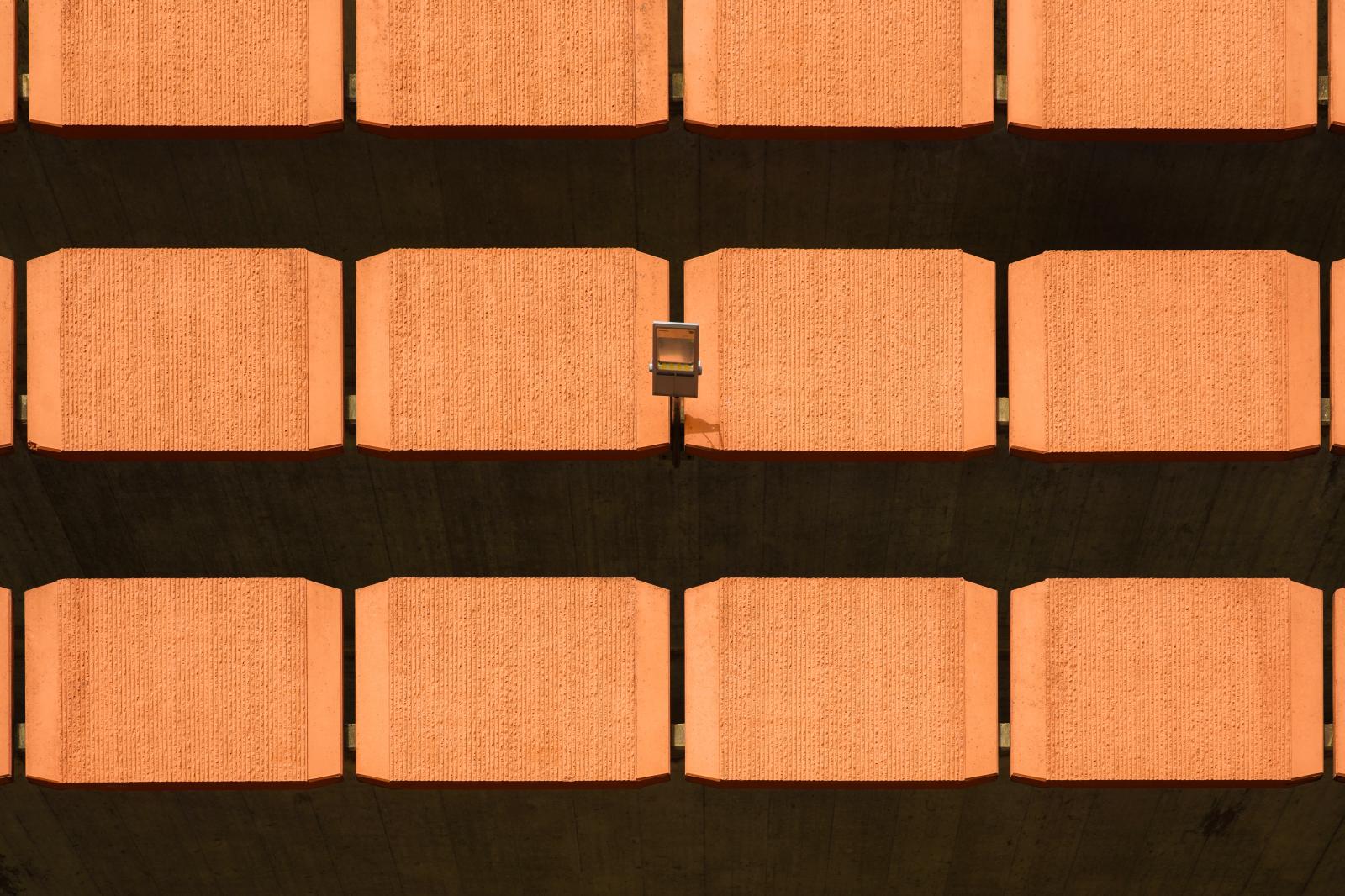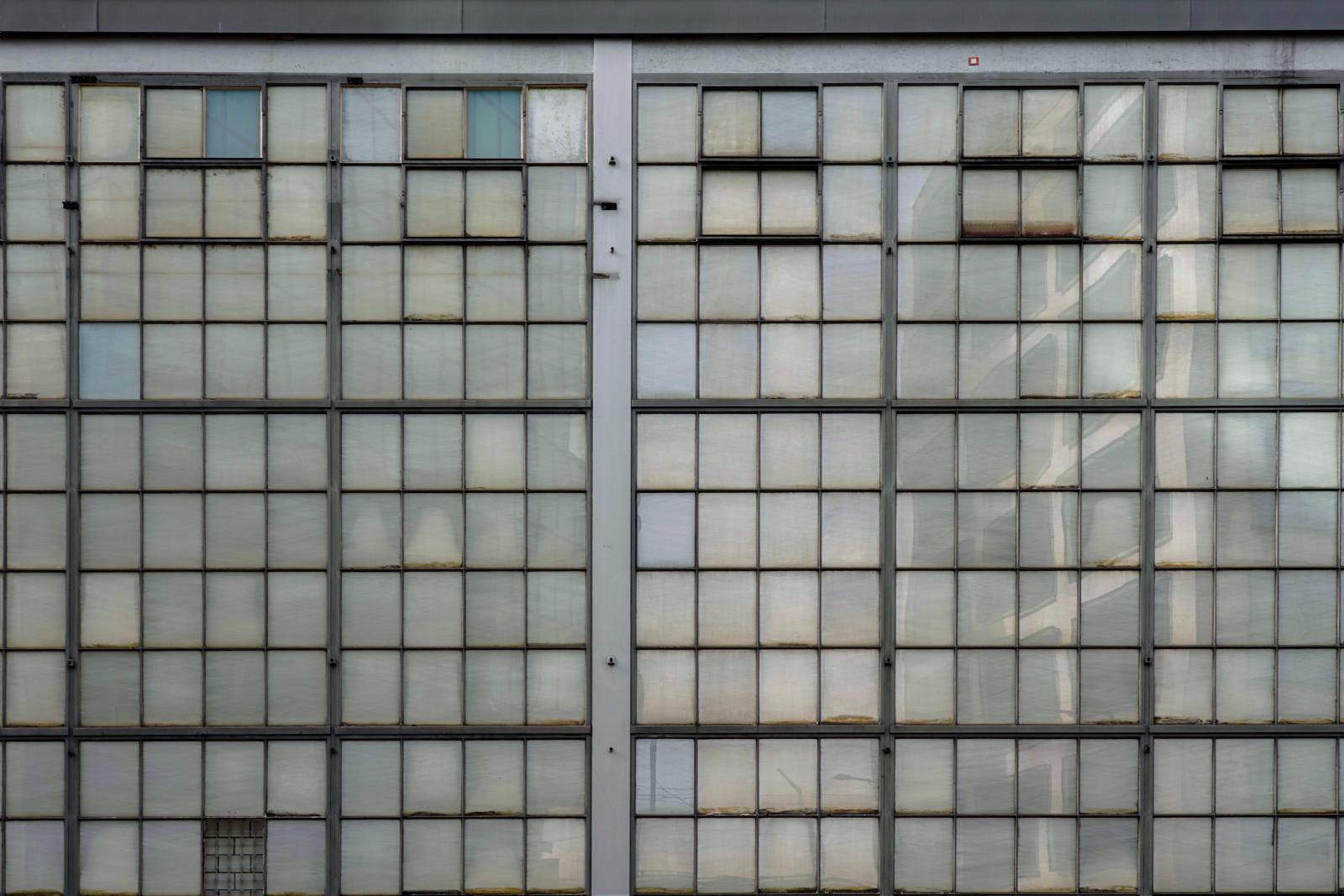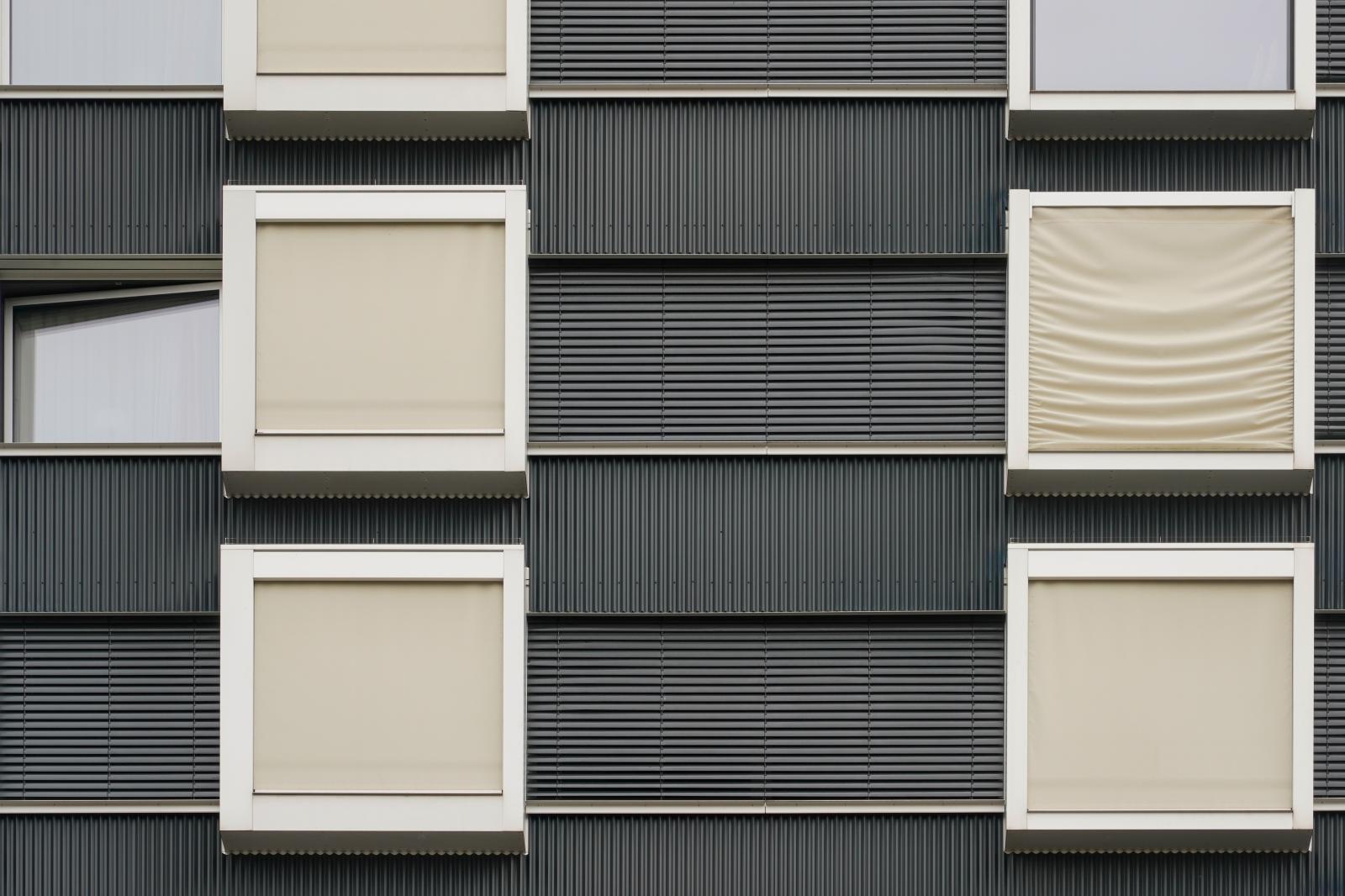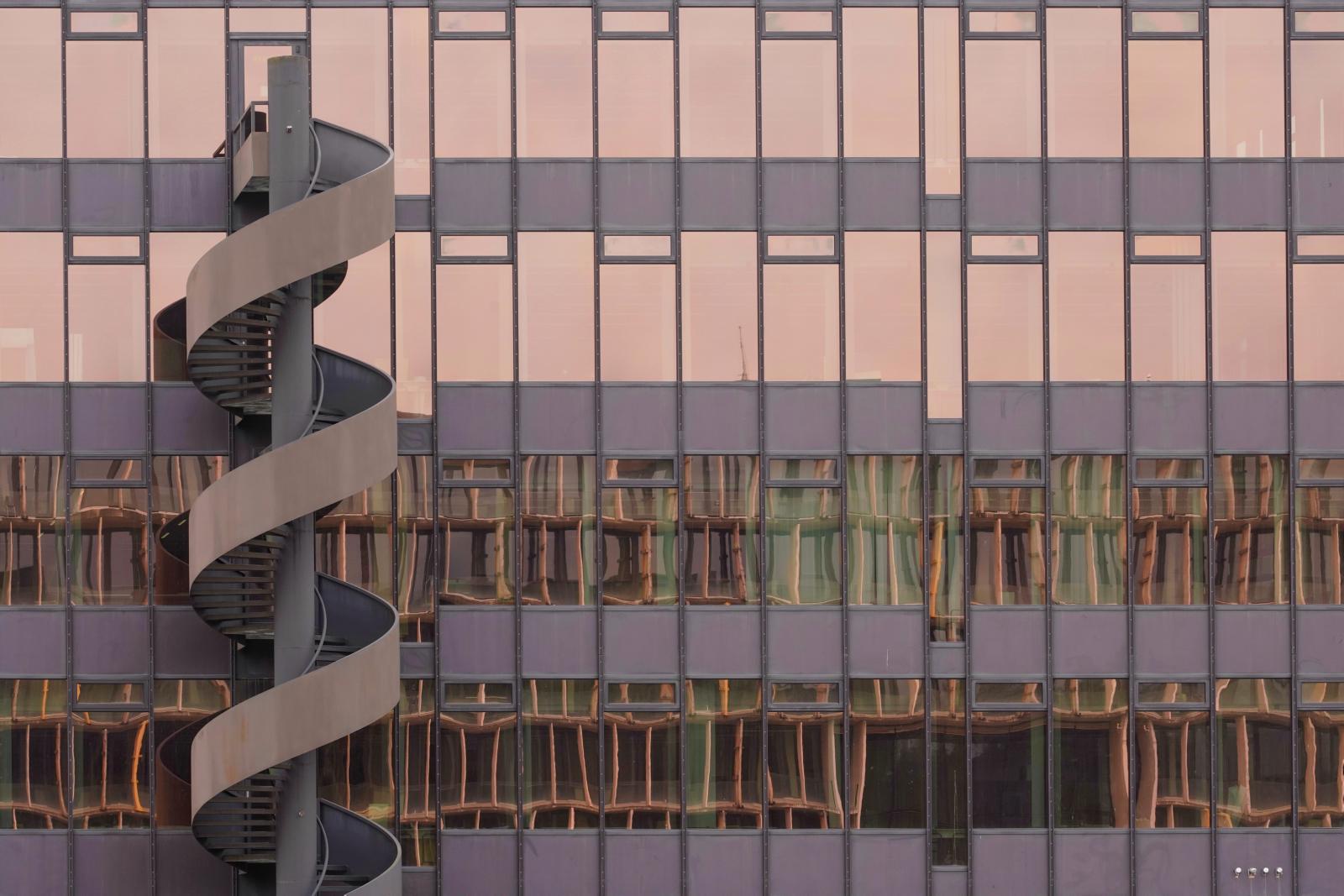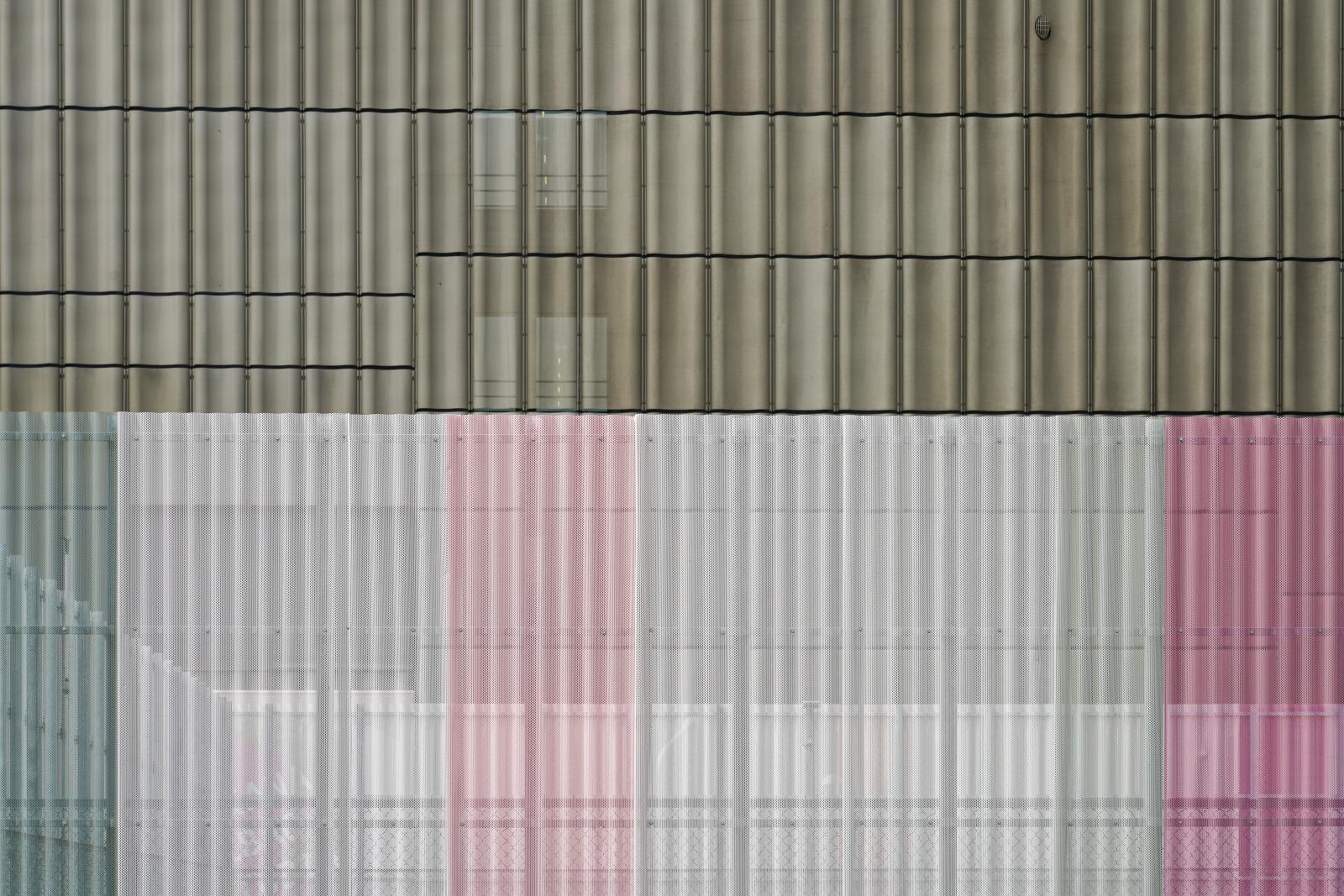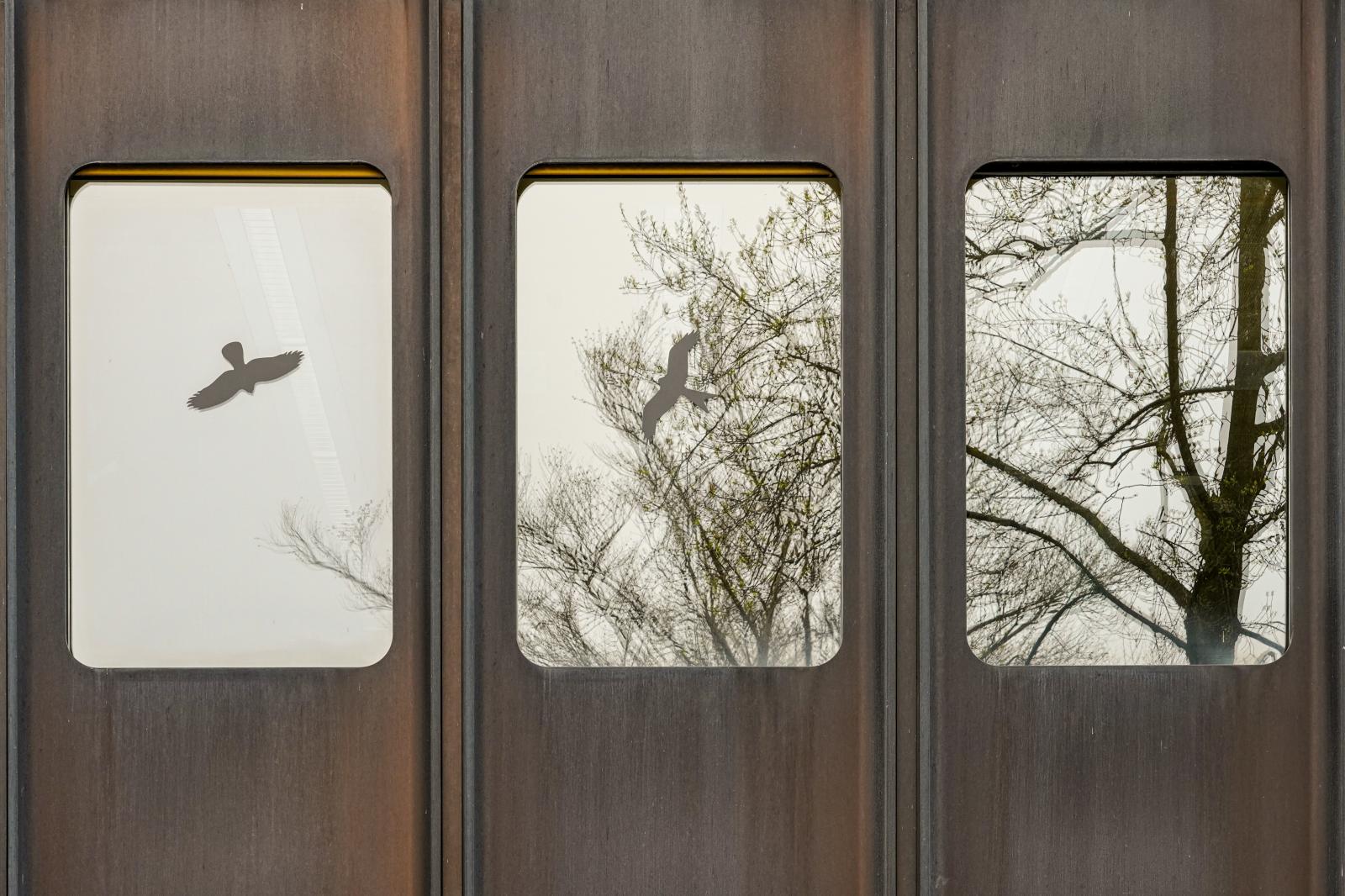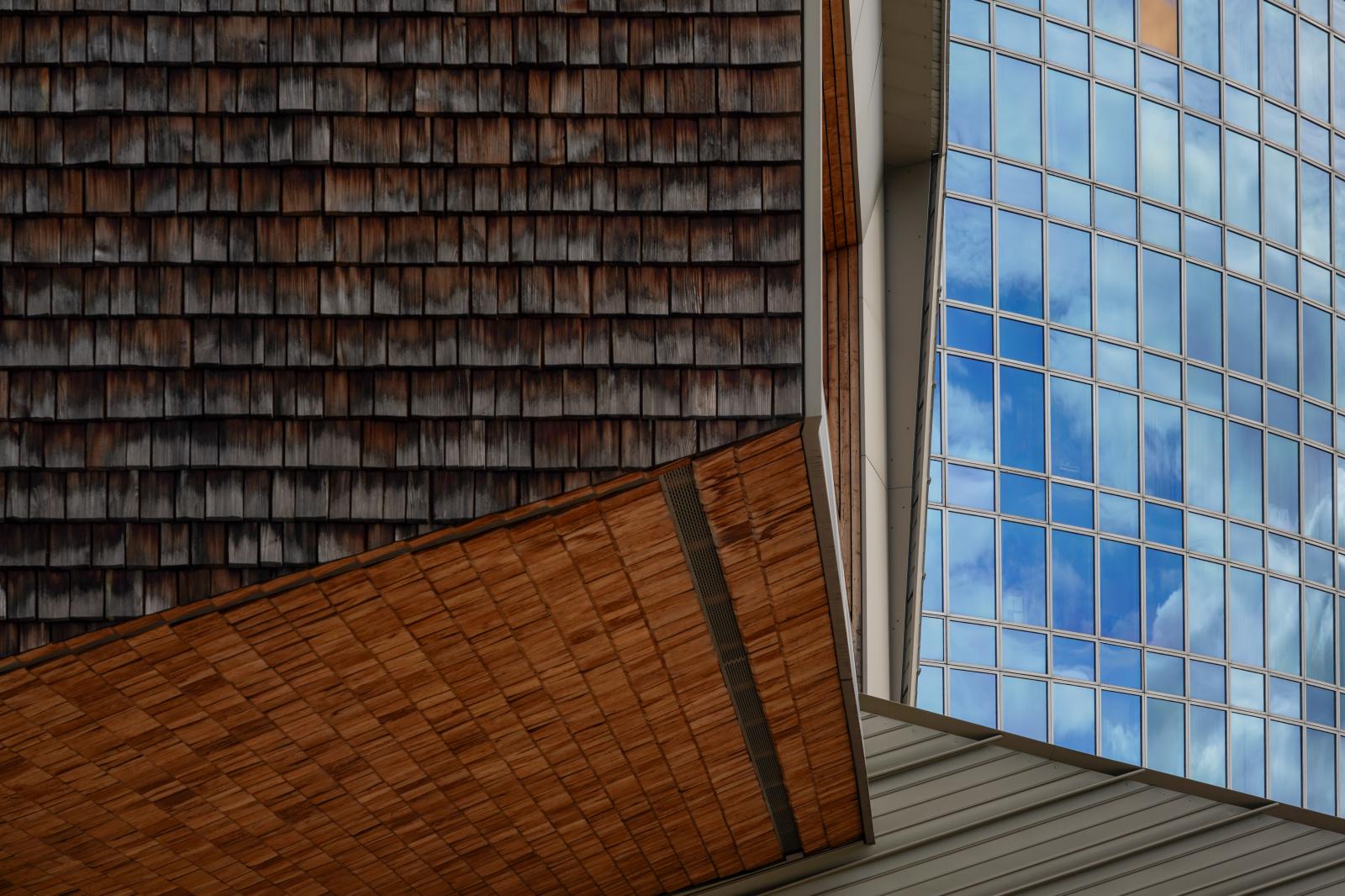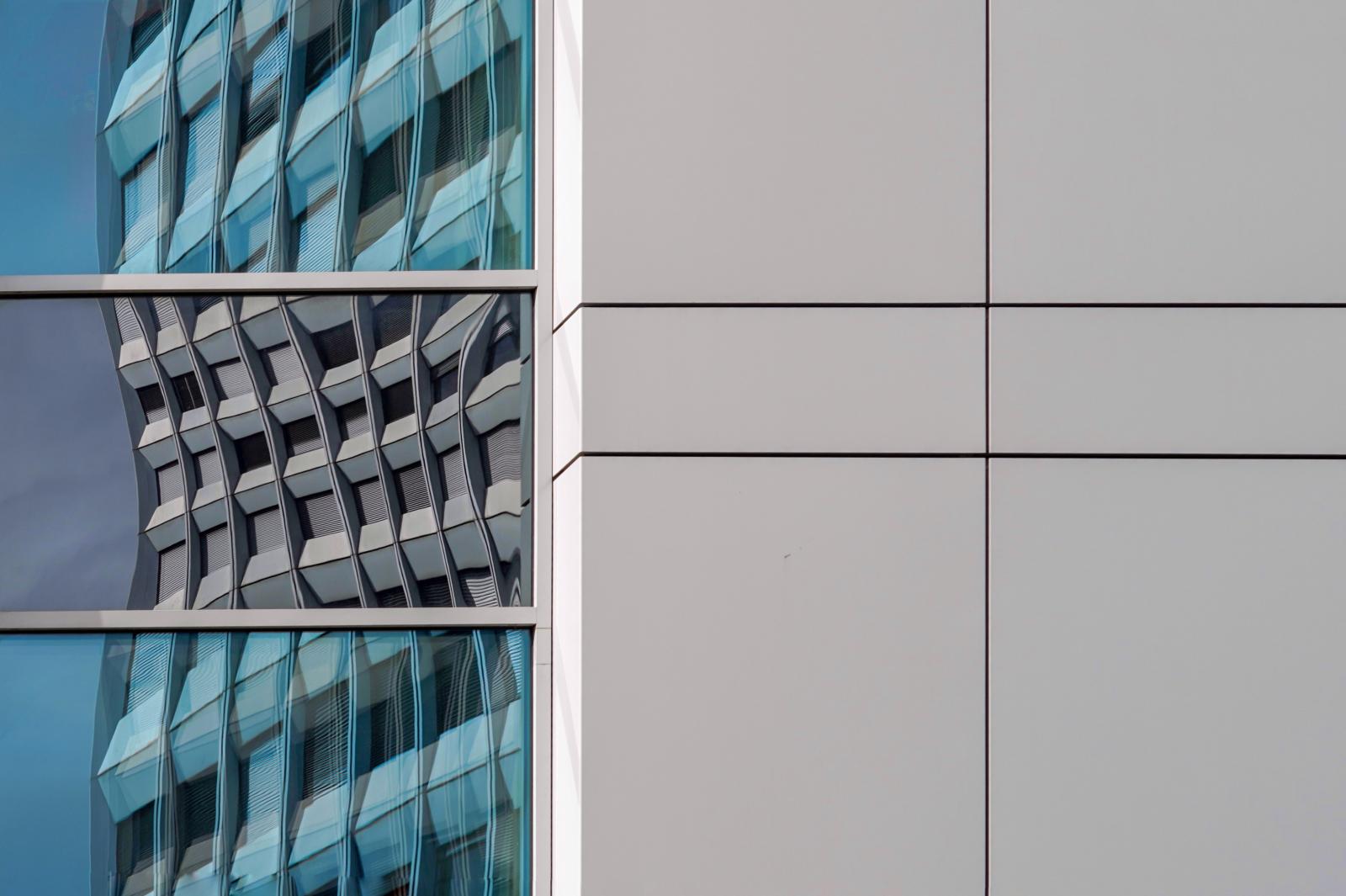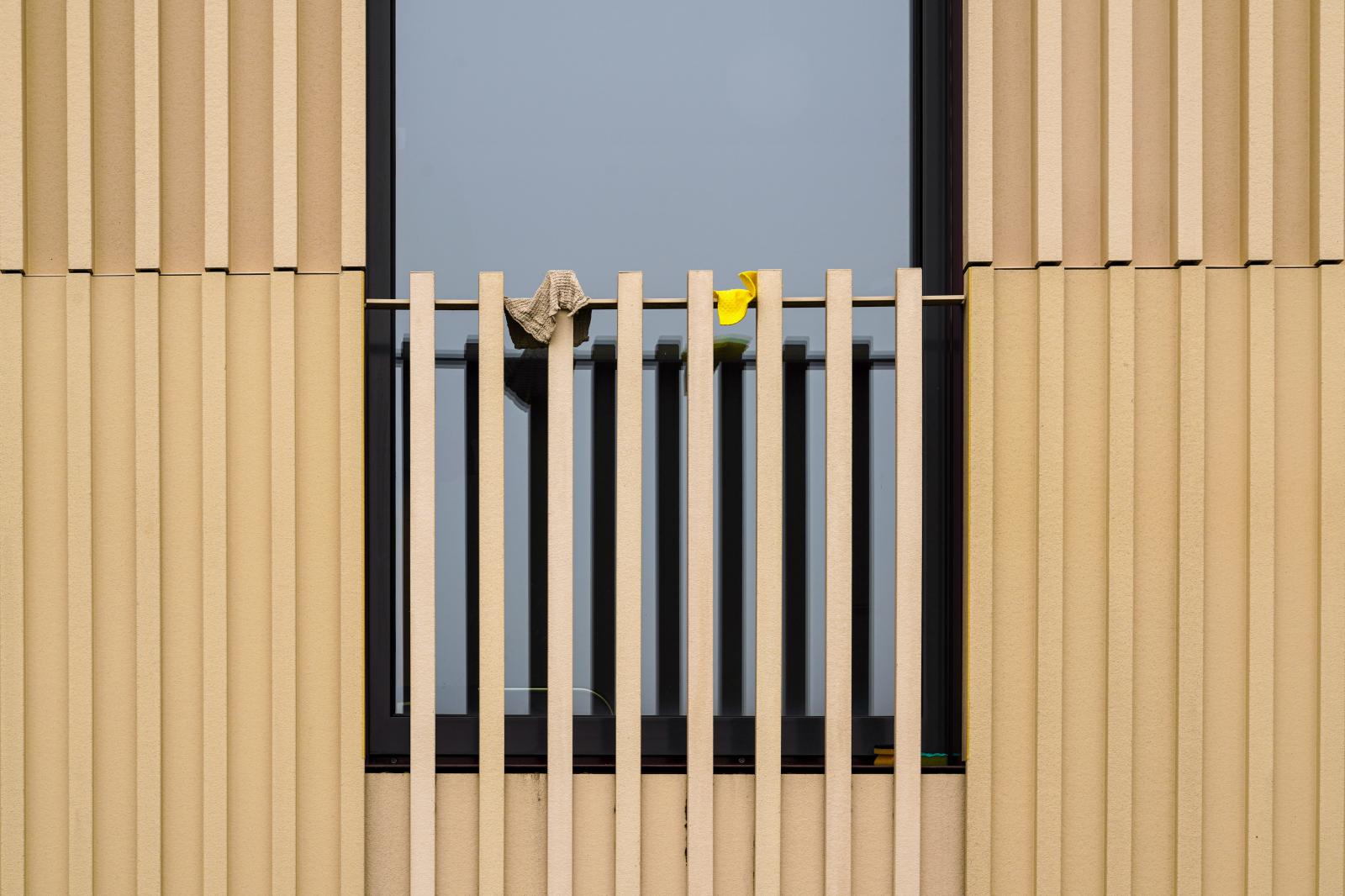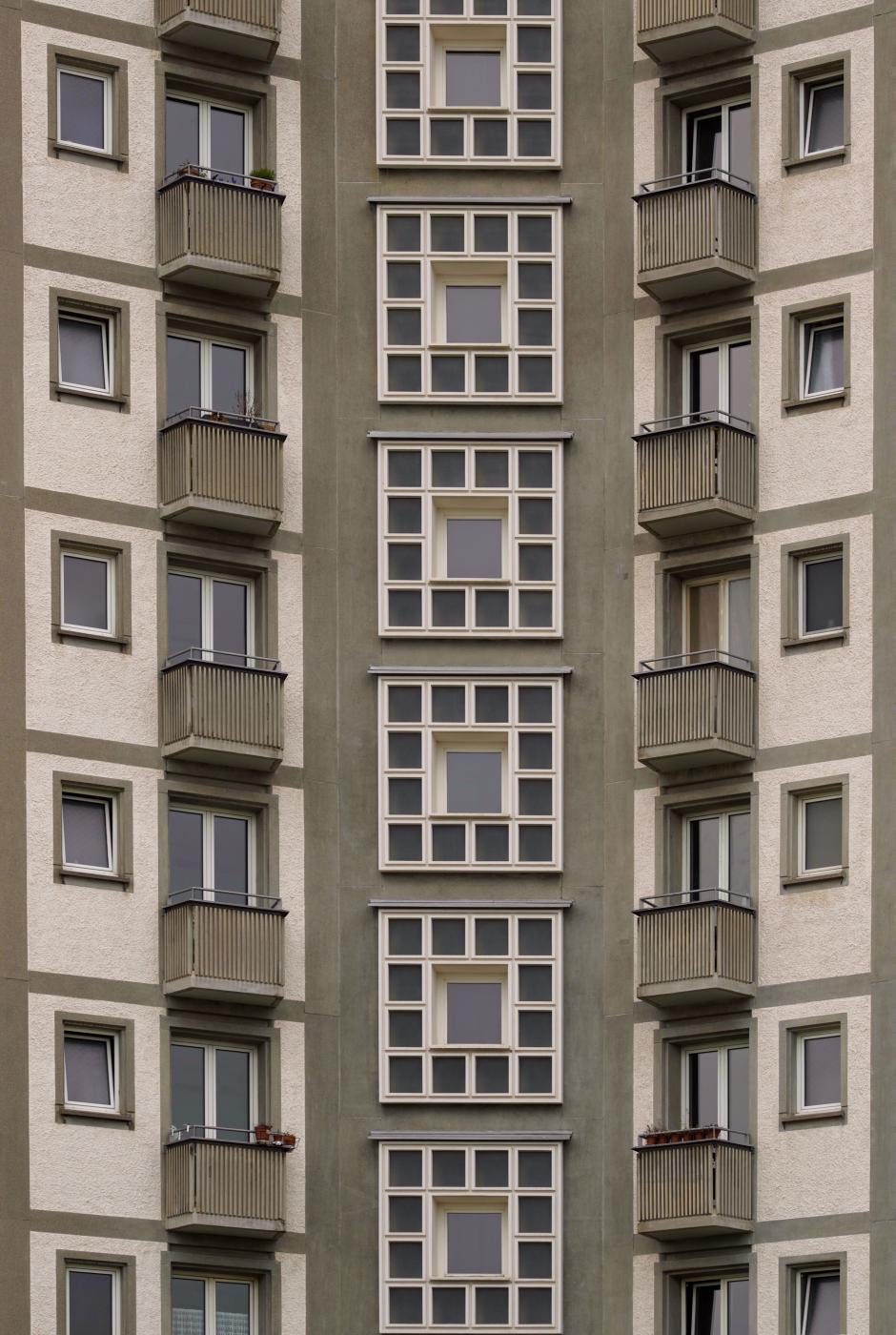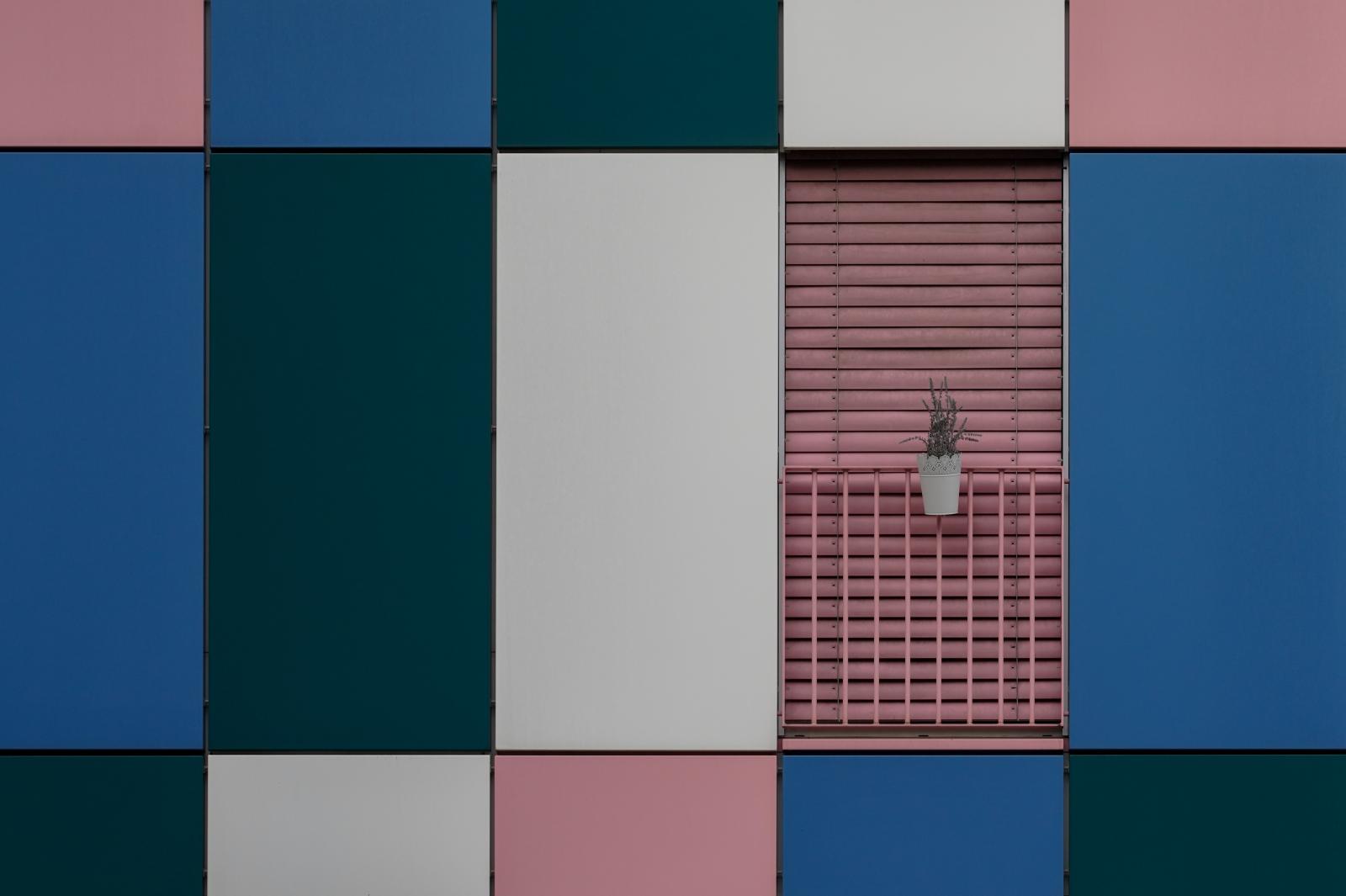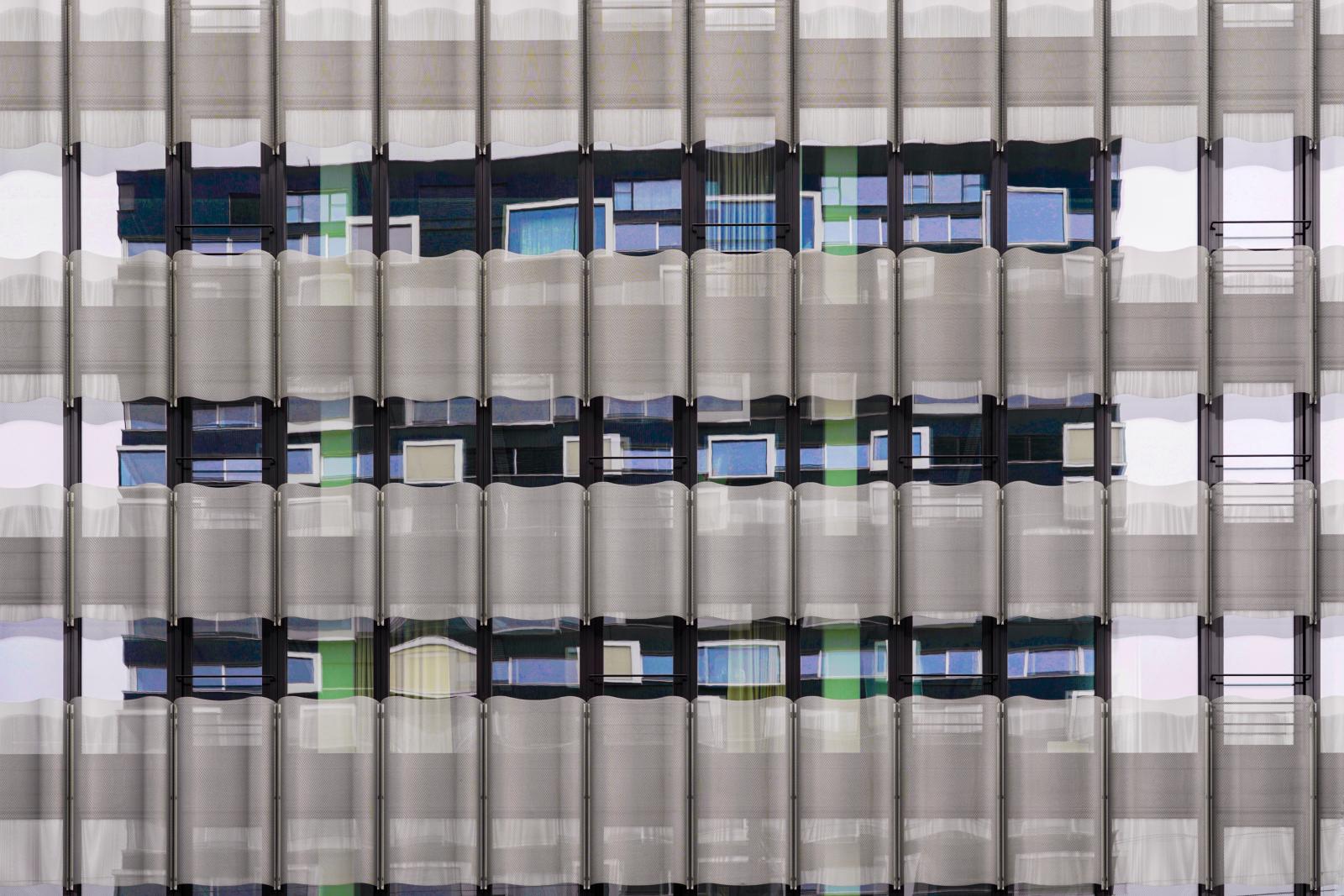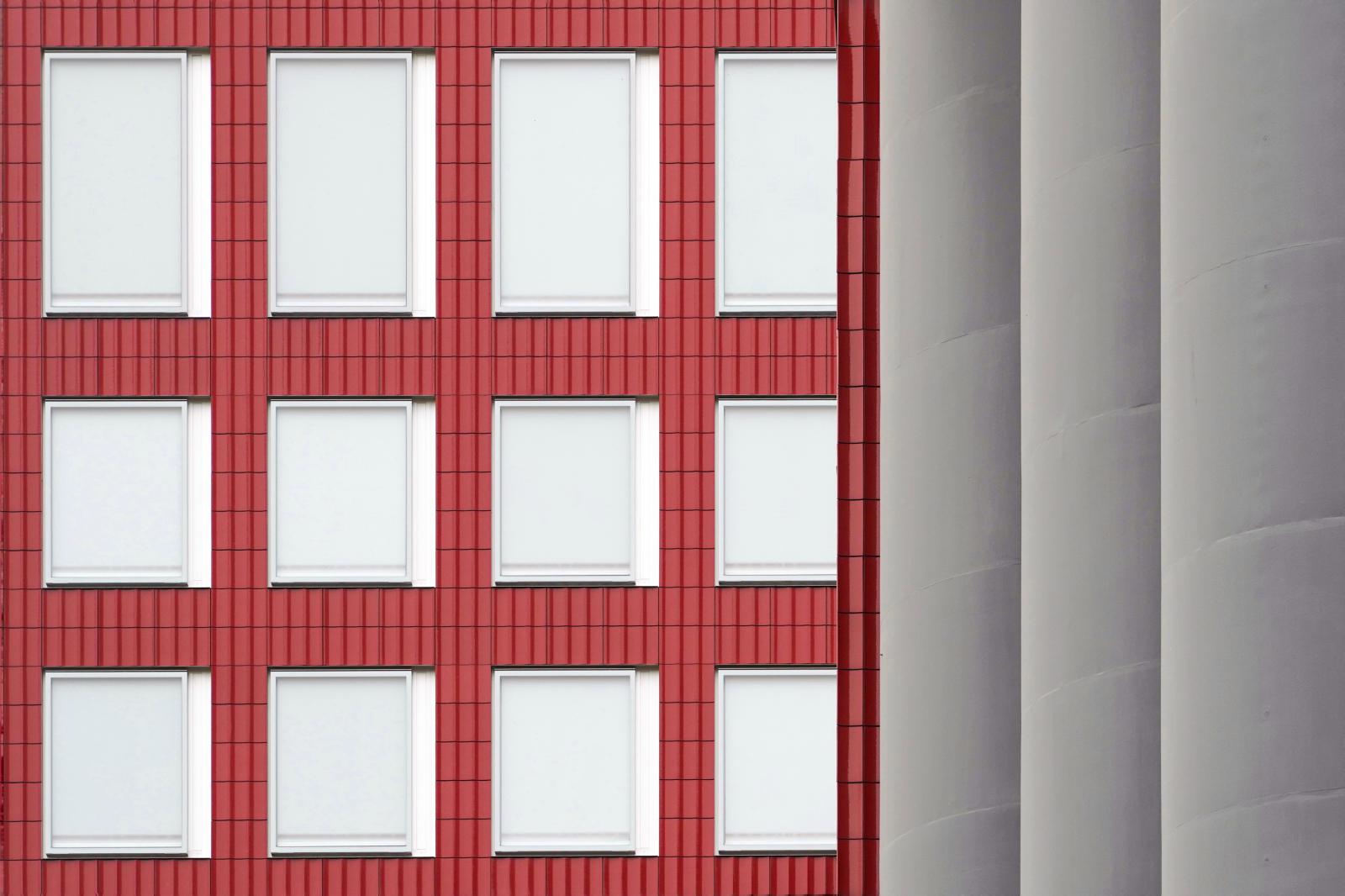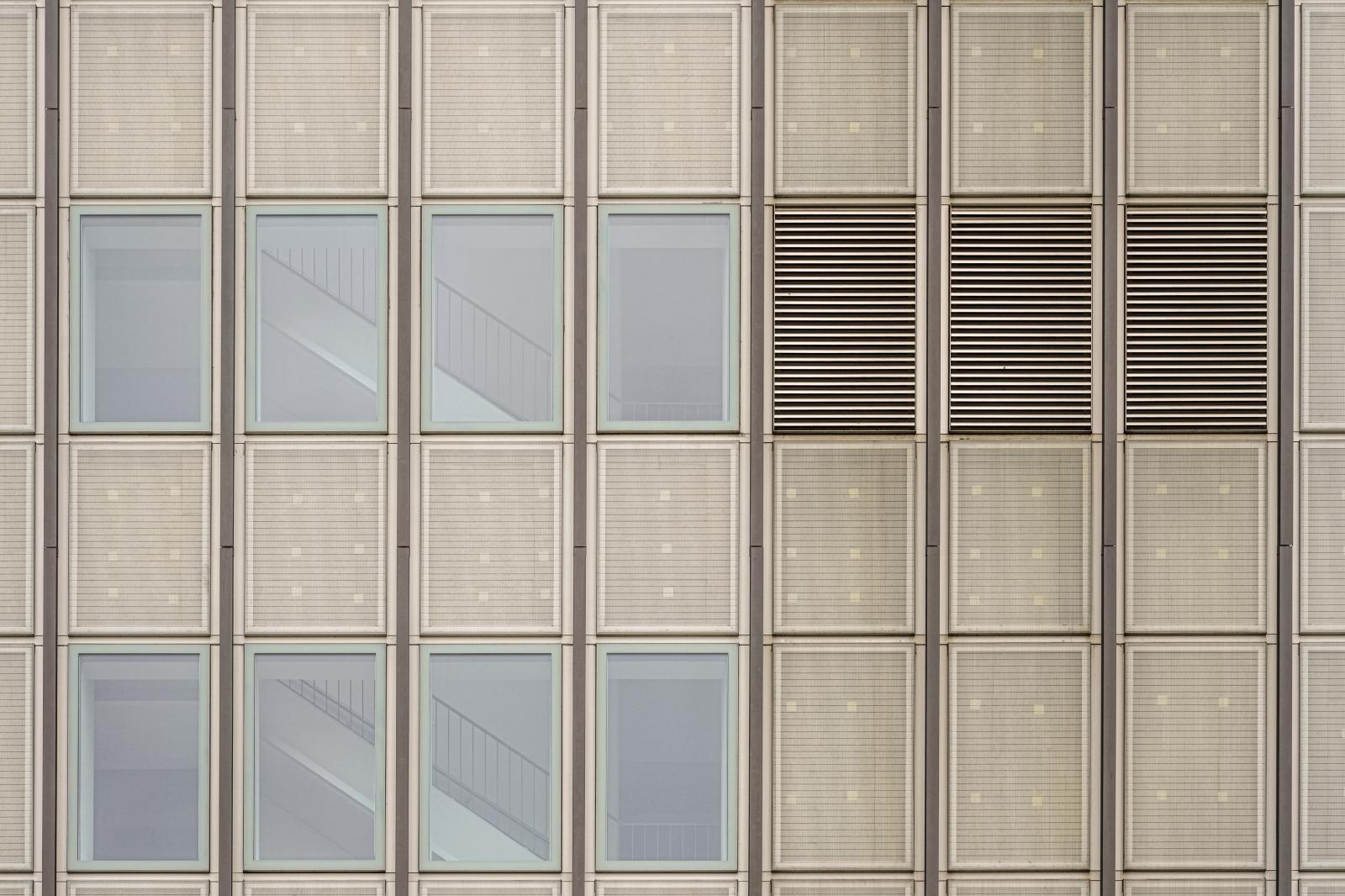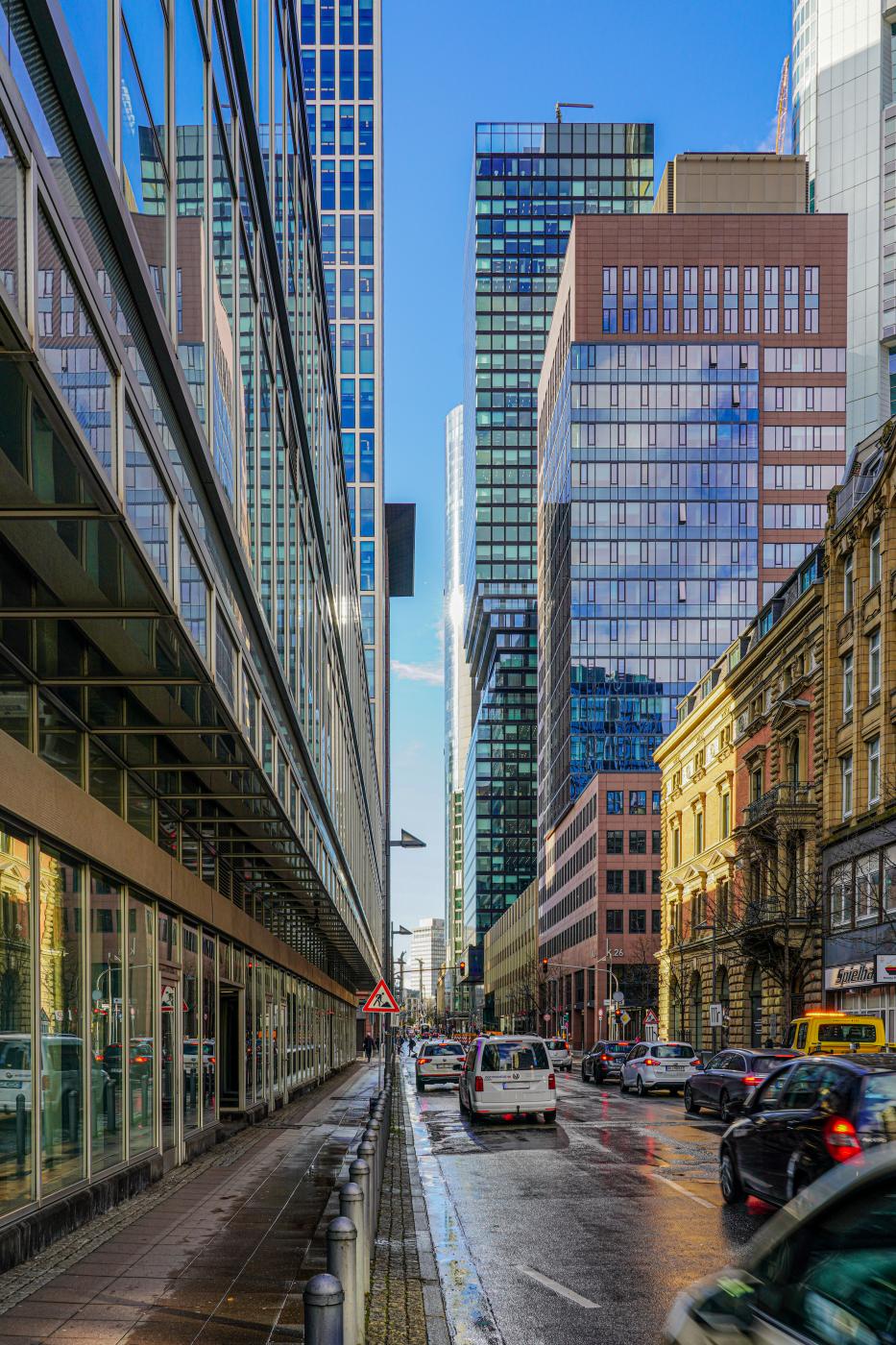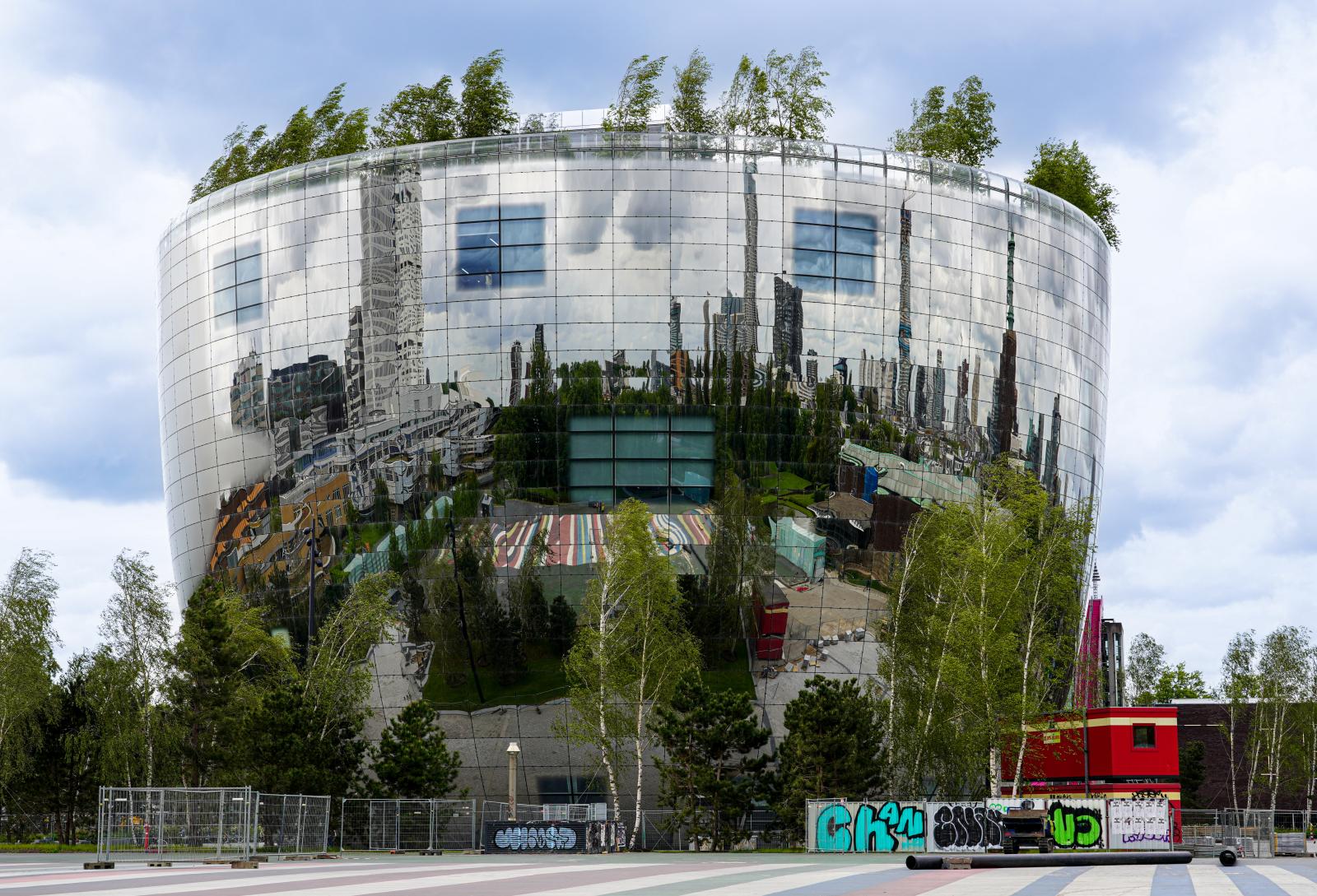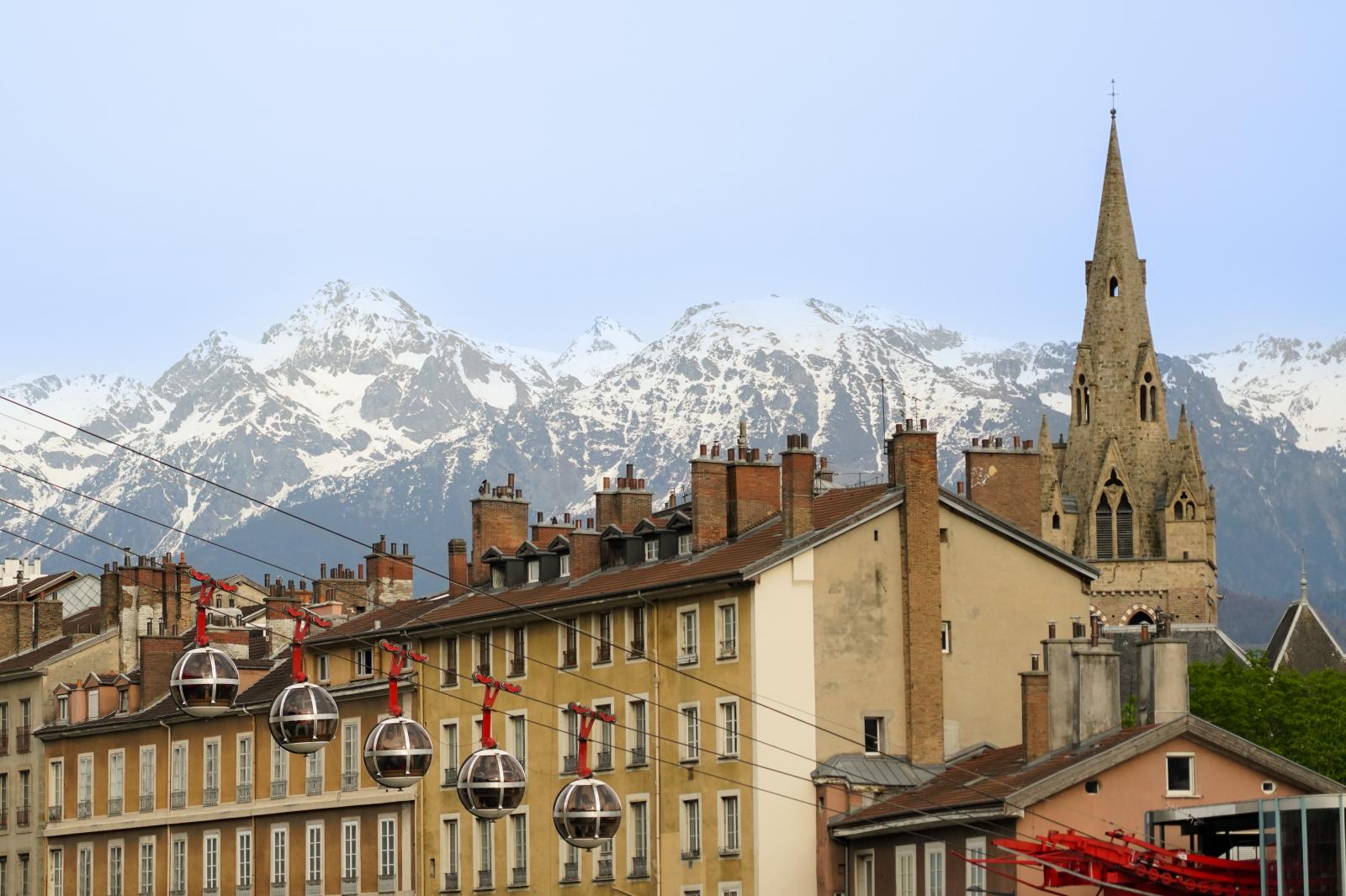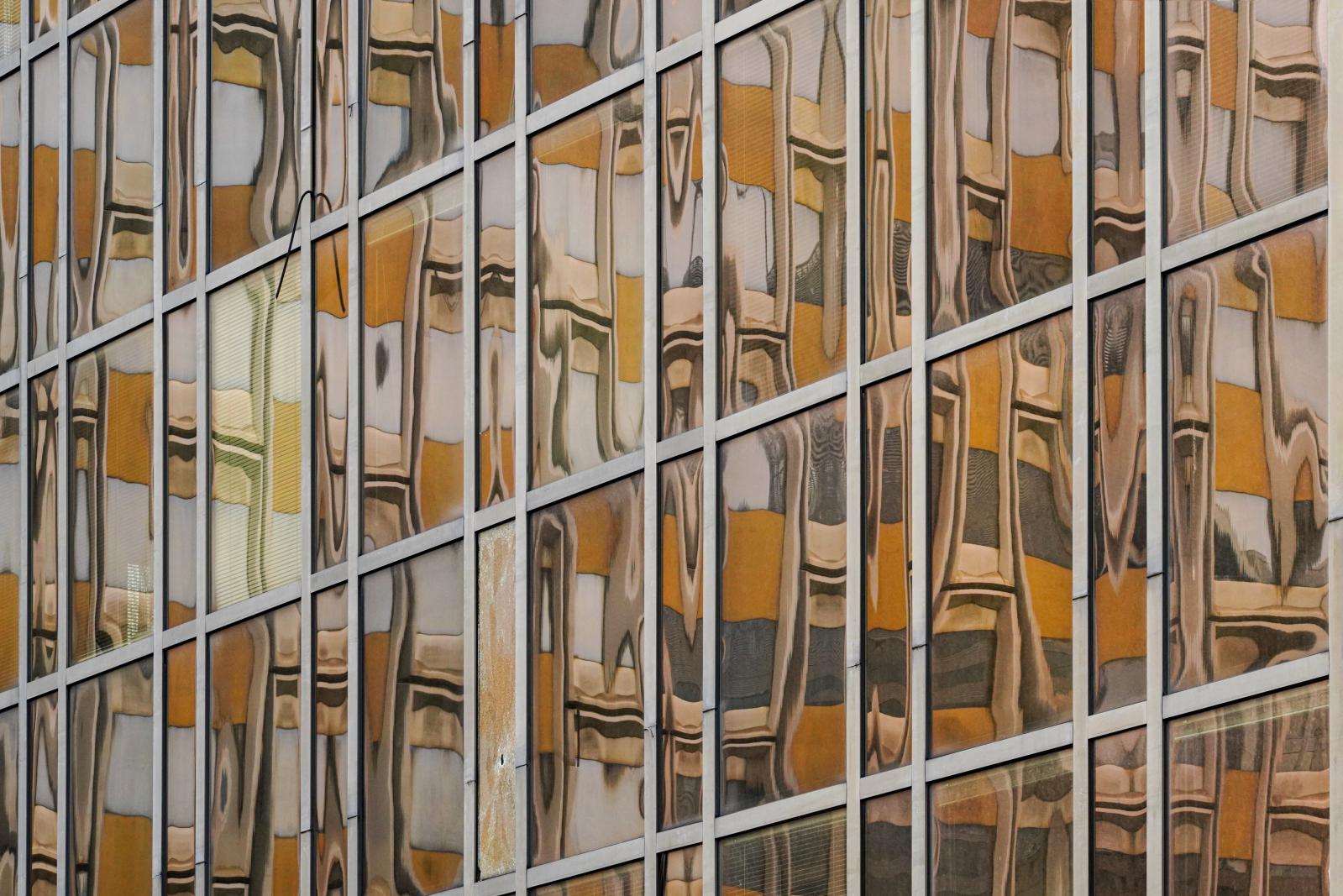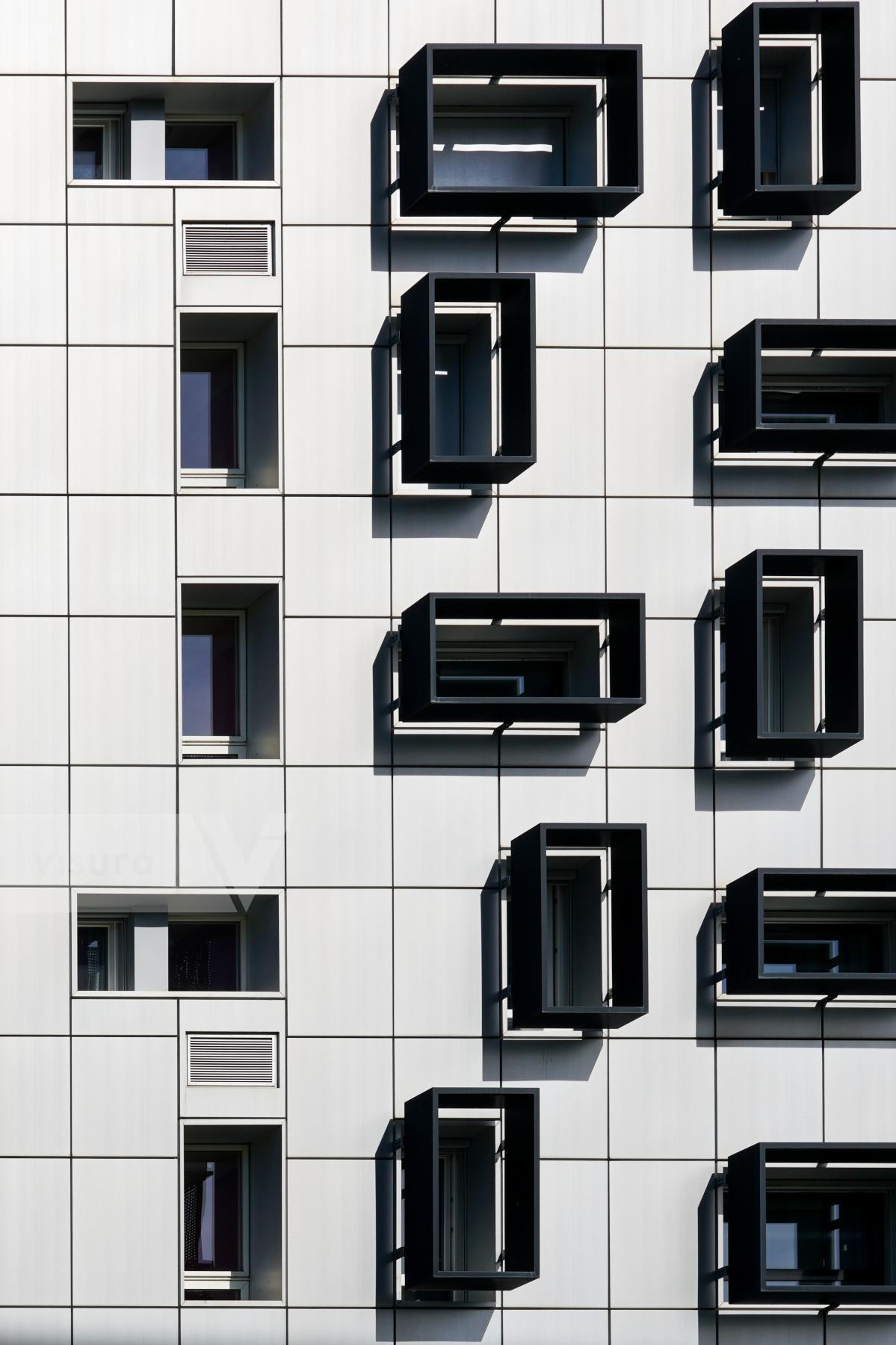
Grenoble, France
# 4236
4/2024
Dynamic Dwellings: Innovative Living Résidence Carline in Grenoble is a testament to innovative student living, where function intersects with avant-garde design. The striking architecture by Tomasini Design Architecture features a pattern of protruding frames, creating a dynamic facade that provides depth and shade. These bold, black frames juxtapose the stark white panels, composing a living space that is as aesthetically engaging as it is practical.

Zürich, Switzerland# 4224
3/2024
Pioneering Heights in Urban Living: Sculpting the Skyline - A 1950s Vision
As one of the first high-rise to punctuate Zurich’s skyline, at Letzigraben, the two Heiligfeld Buildings, conceived by Albert Heinrich Steiner in 1953-55, marks a milestone in urban residential design. The photograph shows one of the two buildings. They stand as an enduring testament to the architectural aspirations of the 1950s in Switzerland. The structure, harmonizes utility and form, crafting a functional symmetry that endures. Its facade, a geometric tapestry of balconies and windows, offers a glimpse into the era’s innovative spirit and Zurich’s architectural courage. Each balcony, a private alcove in the sky, echoes the city’s communal ethos, while the orderly windows serve as the building’s rhythmic heartbeat, exemplifying Zurich’s commitment to blending individuality within collective living spaces.
Purchase your Fine Art Photo PrintBuy your License

Zürich, Switzerland# 4244
3/2024
Portrait of modern Diversity: Rhythmic Heartbeat
The K.I.S.S. building on Badenerstrasse paints a portrait of modern diversity, each window a unique note in a symphony of urban living. The asymmetry of glass and metal, in hues ranging from charcoal to cream, forges a facade that’s both spontaneous and precise. Here, amid Zurich’s rhythmic heartbeat, is a place where residence meets commerce, where every maisonette tells a tale, set against the pulse of the nearby Letzigrund stadium. Evolution Design AG has crafted more than a building; it’s a living, breathing entity, where every asymmetrical window frames life’s unscripted moments.
Purchase your Fine Art Photo PrintBuy your License
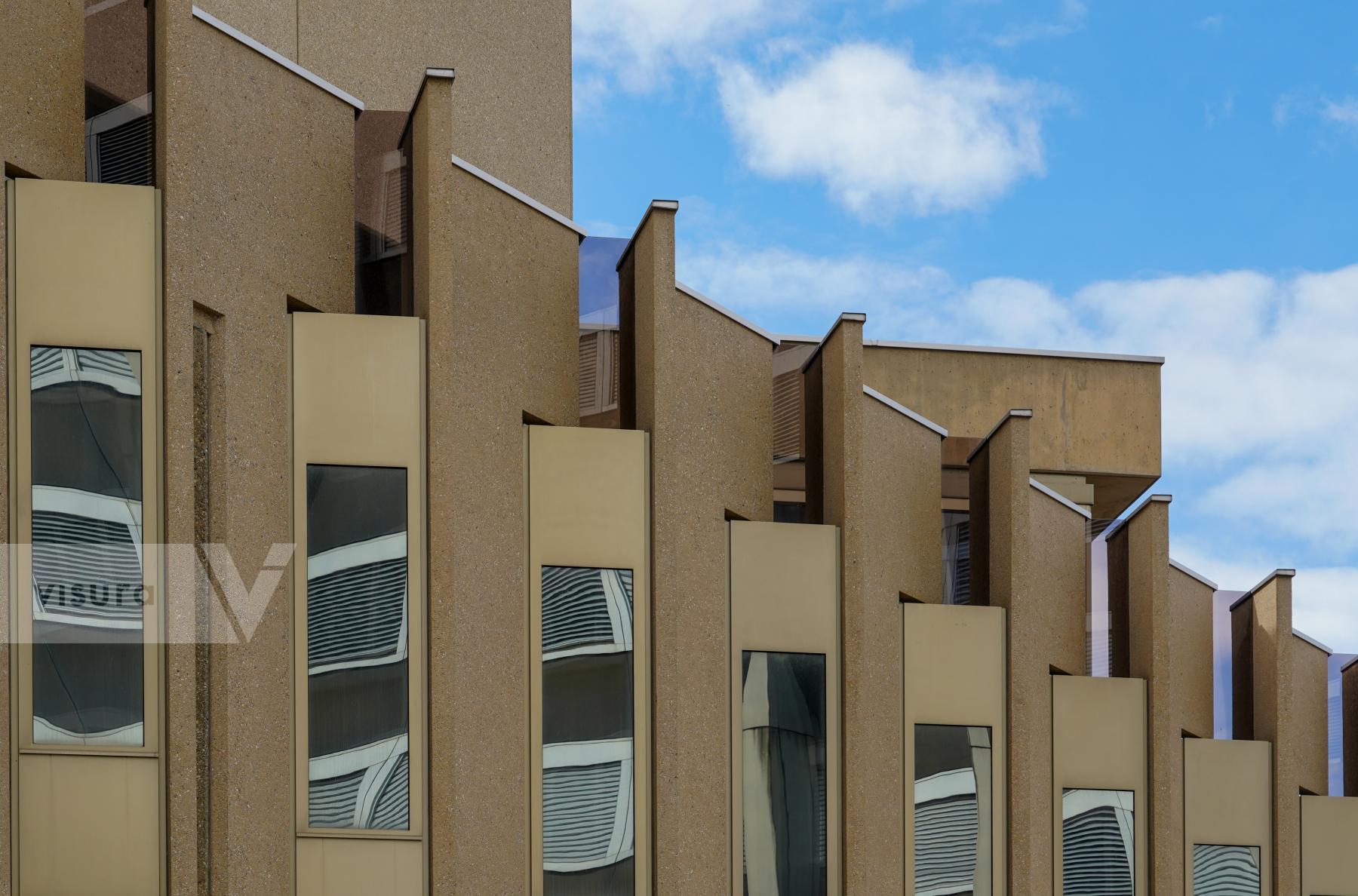
Geneva, Switzerland# 4214
4/2024
Architectural Harmony: Three-dimensional Effect
The facade part of the CICG, Geneva International Conference Center is a rhythmic composition of form and reflection, embodying the collaborative vision of architects André and Francis Gaillard and Alberto Camenzind. Designed in 1973, it displays a unity of vertical lines and mirrored windows, capturing distorted reflections of the world outside. These glimpses offer a distorted reality, one that’s ever-changing with the daylight and the passing clouds. The protruding elements add a three-dimensional effect, providing an interplay of light and shadow that brings the structure to life amidst the skies of Geneva.
Purchase your Fine Art Photo PrintBuy your License

Lyon, France# 4198
4/2024
Elegance in Confluence: Gracefully unfolding against the Sky
Detail of an architectural marvel in Lyon, where science and aesthetics blend, the Musée des Confluences is a building of knowledge at the meeting of rivers. Gracefully unfolding against the Lyon sky, the Musée des Confluences is an embodiment of fluidity and form. Its contours, a manifestation of the confluence where the Rhône meets the Saône, are etched in the language of modern design. Designed by Coop Himmelb(l)au, the museum whispers tales of natural sciences, encased in a structure that defies traditional confines. Opened in 2014, it is not just a building but a vessel, carrying the profound narrative of our world’s history, knowledge, and the undying human spirit of inquiry.
Buy your LicenseOnly editorial, no commercial use
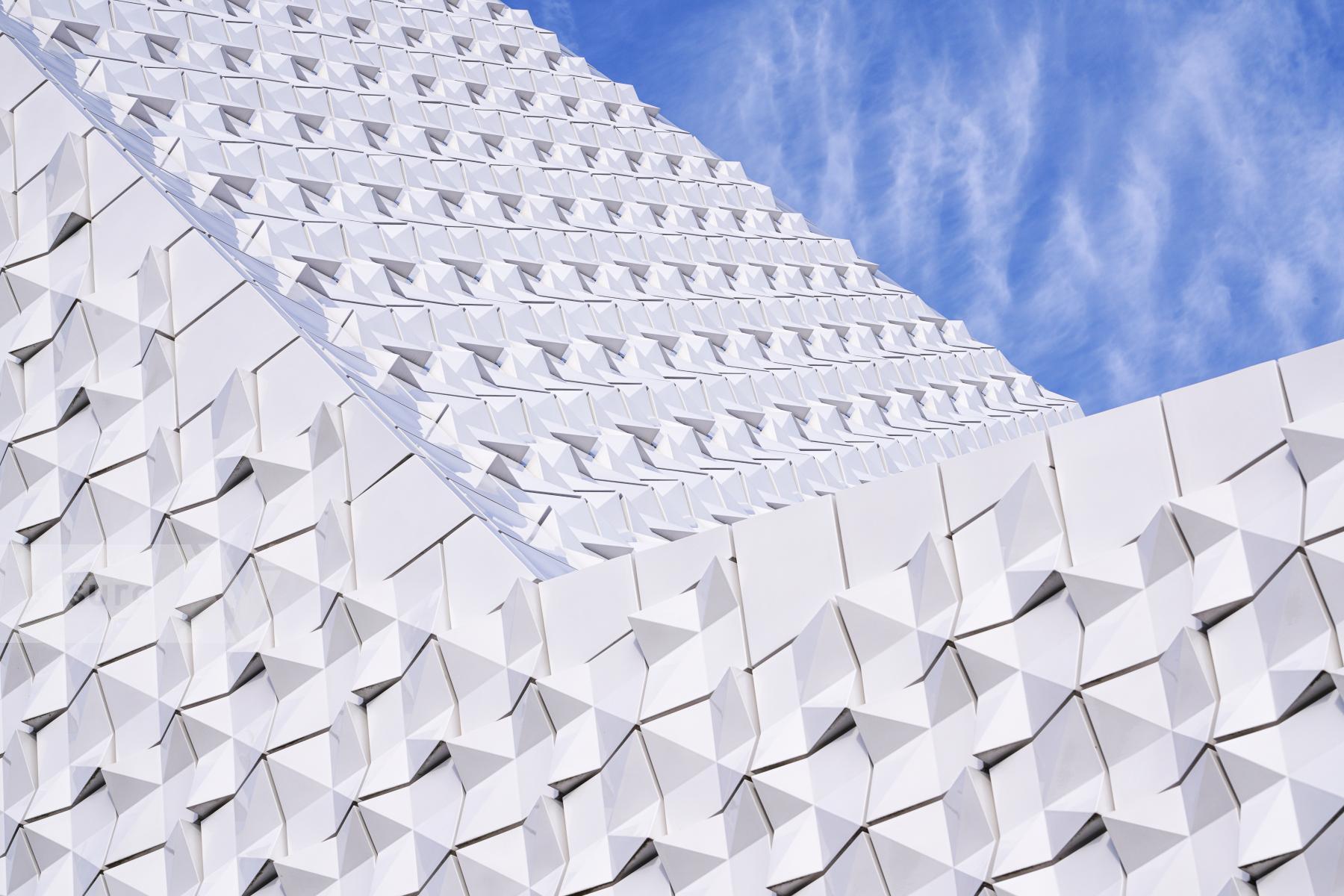
Poing, Germany # 4139
1/2024
Crystal Vision: The Church Mirrors
The photograph showcases the dynamic facade of the Seliger Pater Rupert Mayer church in Poing, a masterpiece designed by Andreas Meck and Axel Frühauf. Nicknamed ‚God’s ski jump’ for its distinctive angular form, the church mirrors the multifaceted surface of a crystal. Over 15,000 three-dimensional white tiles clad the exterior, capturing and reflecting sunlight in a dazzling display of brilliance. This architectural feat not only represents a bold statement of modern design but also an embodiment of innovation, as it interacts with the environment and the changing light throughout the day.
Purchase your Fine Art Photo PrintBuy your License

Ulm, Germany # 4130
1/2024
Architectural Harmony: Rhythms in Urban Design
The me and all hotel in Ulm presents a striking example of modern architectural rhythm, its facade a symphony of vertical lines and geometric precision. This image captures the essence of contemporary architecture through the facade of the me and all hotel in Ulm. The building’s exterior is characterized by a repeating pattern of vertical slats, creating a sense of rhythm and movement that is both dynamic and harmonious. The alignment of these elements against the clear blue sky emphasizes the building’s height and the meticulous attention to detail in its design. The slats act as a visual filter, providing privacy for the hotel’s interiors while allowing natural light to penetrate and create living spaces with a connection to the outside world. This façade not only serves a functional purpose but also contributes to the building’s identity, making it a distinctive landmark in Ulm’s urban landscape. The photograph itself, with its tight framing, encourages viewers to appreciate the patterns and textures that define modern urban architecture.
Purchase your Fine Art Photo PrintBuy your License
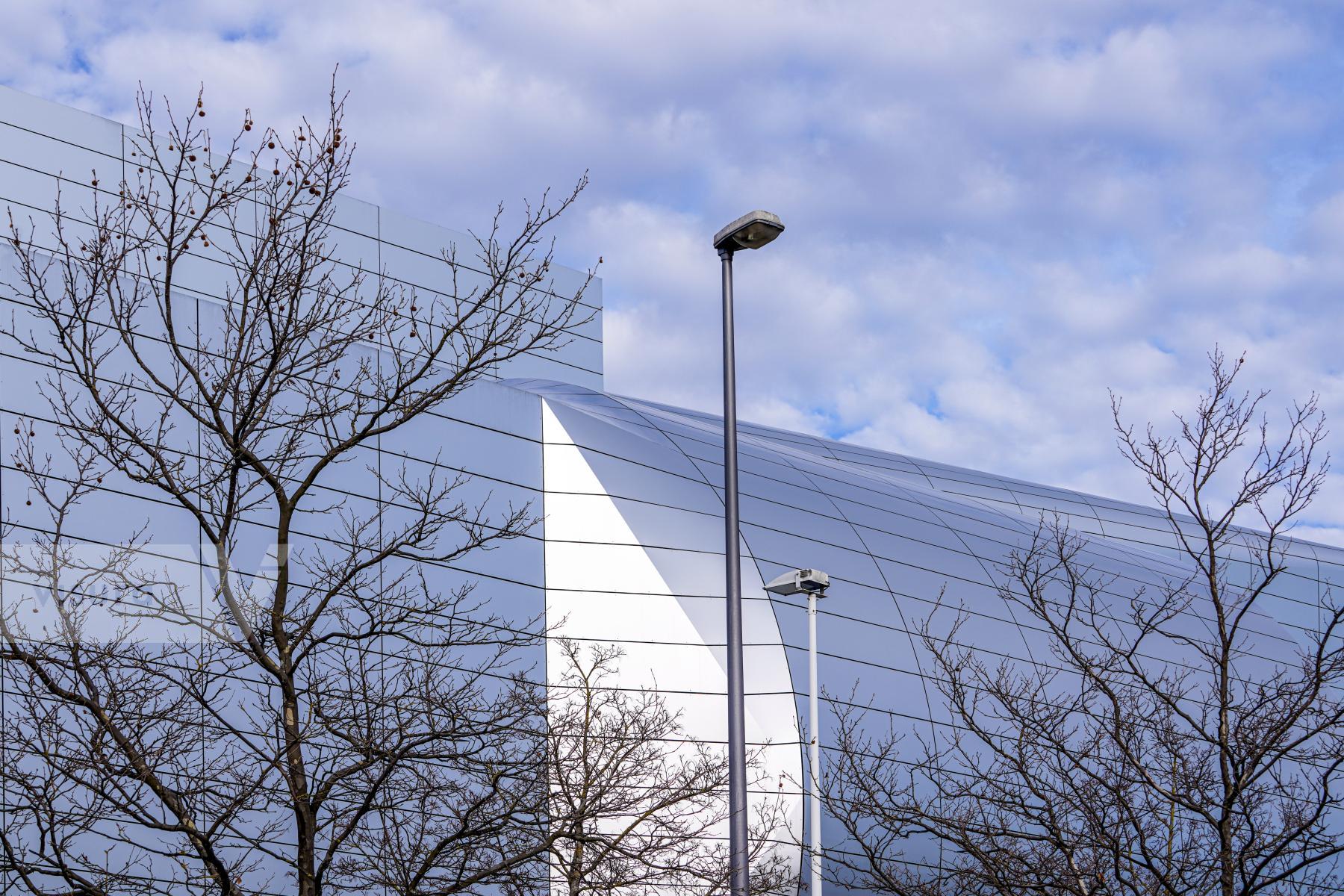
Munich, Germany# 4165
2/2024
Architectural Minimalism: Sleek modern Design
This image captures a portion of the BMW Group Research and Innovation Centre’s building against a backdrop of a clear sky, intercepted by the bare branches of trees. The photograph highlights the building’s clean lines and reflective surfaces, which seamlessly integrate into the surrounding environment. The design emphasizes functionality and innovation, characteristic of BMW’s commitment to progressive automotive development.
Purchase your Fine Art Photo PrintBuy your License

Berlin, Germany # 4158
9/2022
Harmony in Contrast: Highly reflective Aluminium Cladding
This image captures the compelling juxtaposition of the nhow Berlin “music hotel,” where the warm tones of brickwork stand against the futuristic sheen of highly reflective aluminium cladding, glass, and polished stainless steel. Designed by architect Sergei Tchoban of NPS Tchoban Voss, the building presents an architectural symphony, blending the traditional with the modern, the opaque with the transparent, and the earthy with the metallic. It’s a visual metaphor for the hotel’s theme, resonating with the diversity and creativity inherent in music and design.
Purchase your Fine Art Photo PrintBuy your License
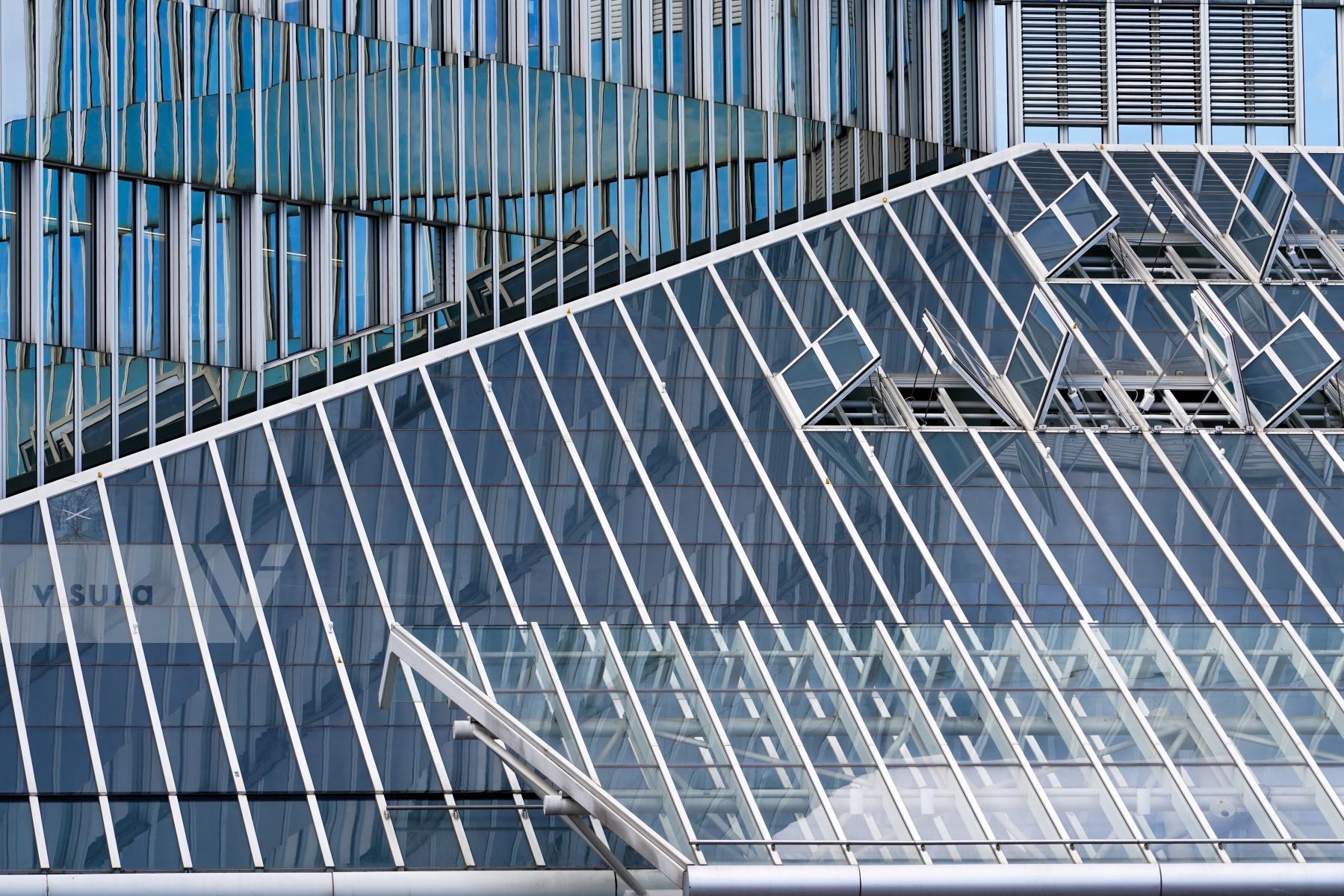
Munich, Germany# 4170
2/2024
Architectural Symphony in Glass: Interplay of Reflections
This photograph captures the dynamic reflections on the glass facade and roof of the BMW Group Research and Innovation Centre FIZ in Munich. The image portrays a blend of functionality and design, where the glass surfaces create a canvas reflecting the sky and surroundings. The intricate patterns on the roof windows add a structural rhythm to the visual composition, suggesting innovation and transparency are at the core of the building’s design philosophy.
Purchase your Fine Art Photo PrintBuy your License

Frankfurt, Germany# 4144
3/2023
Dialogue with History: Visual Metaphor
The Historisches Museum in Frankfurt am Main presents a facade reminiscent of folded paper, blending modern design with historical context. The facade of the Historisches Museum in Frankfurt am Main is a striking example of contemporary architecture’s dialogue with history. The sharp geometric lines and shapes of the building mimic the precision of origami, creating a visual metaphor for the unfolding stories within its walls. The warm brickwork is punctuated by a large, glass V that cuts into the building, symbolizing a window into the past. This structural element casts a glow that brings life to the inanimate, suggesting the illumination of history through modern perspectives. Wooden elements that appear like closed shutters add a rhythmic pattern to the facade, inviting curiosity about the narratives hidden behind them.
Purchase your Fine Art Photo PrintBuy your License
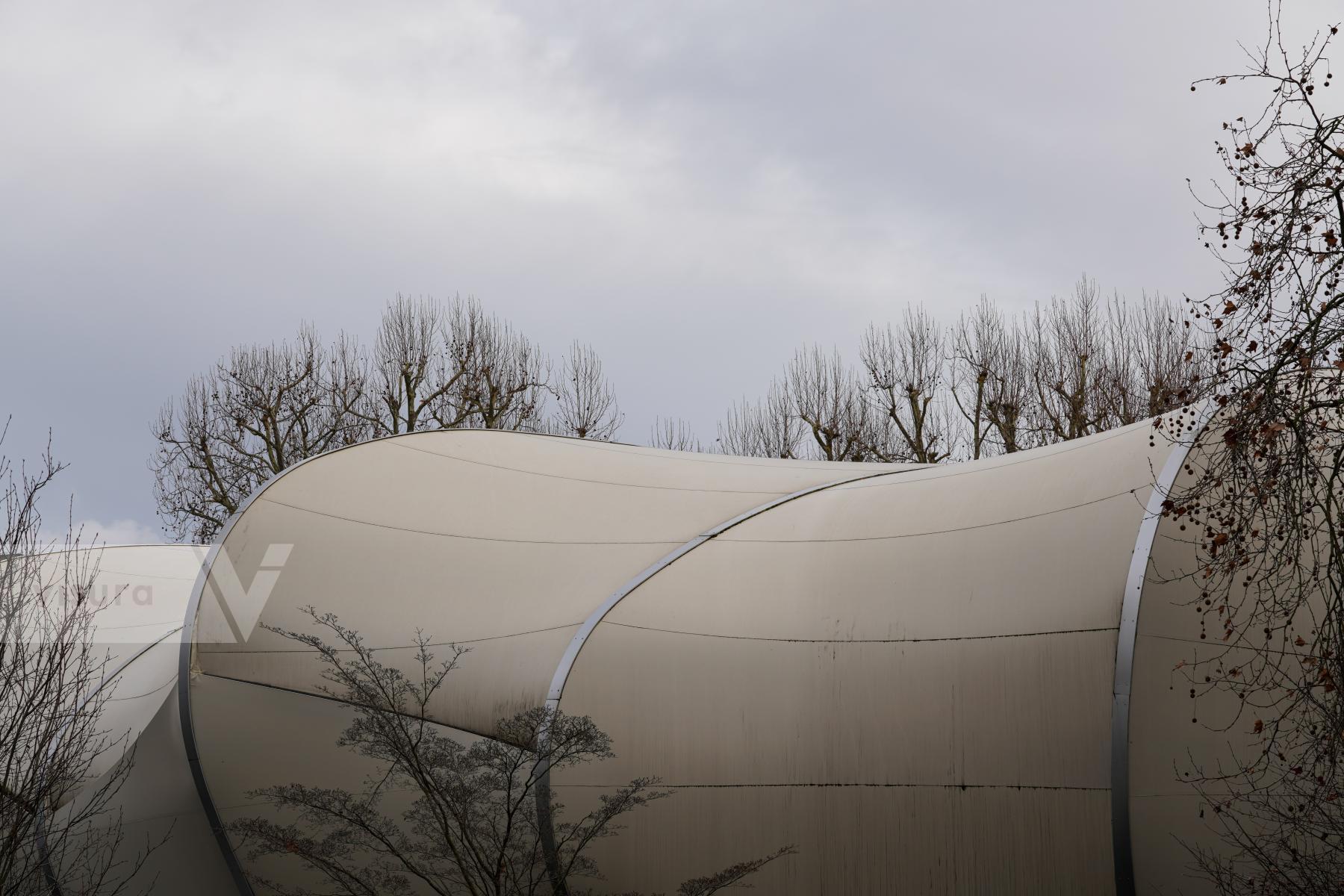
Koblenz, Germany# 4101
12/2023
Architectural Wave: Winter at Koblenz Ropeway
Leafless boughs frame the swooping curve of the Koblenz Ropeway's station roof, an elegant harmony of nature and Werner Sobek's architectural design. In the grip of winter, this image captures the stark beauty of the leafless trees against the fluid lines of the Koblenz Ropeway valley station's roof in Germany. Designed by Werner Sobek with Doppelmayr, the structure is a masterpiece of lightweight construction, with a 1 mm thick fabric stretched over a slender steel frame, illustrating the fusion of functionality and aesthetics.
Purchase your Fine Art Photo PrintBuy your License

Munich, Germany
# 4065
12/2023
Reflections in the brick-red glass and sheet metal façade of the Lorenzistock at the Alter Hof. The architect of the commercial building is Peter Kulka. The Alter Hof building complex in the old town consists of the Burgstock, Zwingerstock and Lorenzistock buildings and was the residence of the Wittelsbach dynasty from the 13th to the 15th century. It was badly destroyed during the war and rebuilt in a simple style, but still based on the old building. The new outer skin of sheet metal and glass elements was uniformly covered with an irregularly appearing oxide red print. Depending on the time of day and the incidence of light, this abstract, shimmering structure opens or closes with the adjacent red tiled roofs of the old buildings.

Dortmund, Germany
# 4050
10/2023
Dortmund Centre for Medicine & Health, DOC. Architect Harald Deilmann, built 1975 - 1978 as an office block. Converted into a medical centre by architects Eller und Eller. The building, which has been a listed building since 2011, is characterised by its horizontal structure and the two ventilation towers. In the facade, circumferential concrete parapets alternate with ribbon windows made of bronze-coloured solar control glass in dark metal frames.
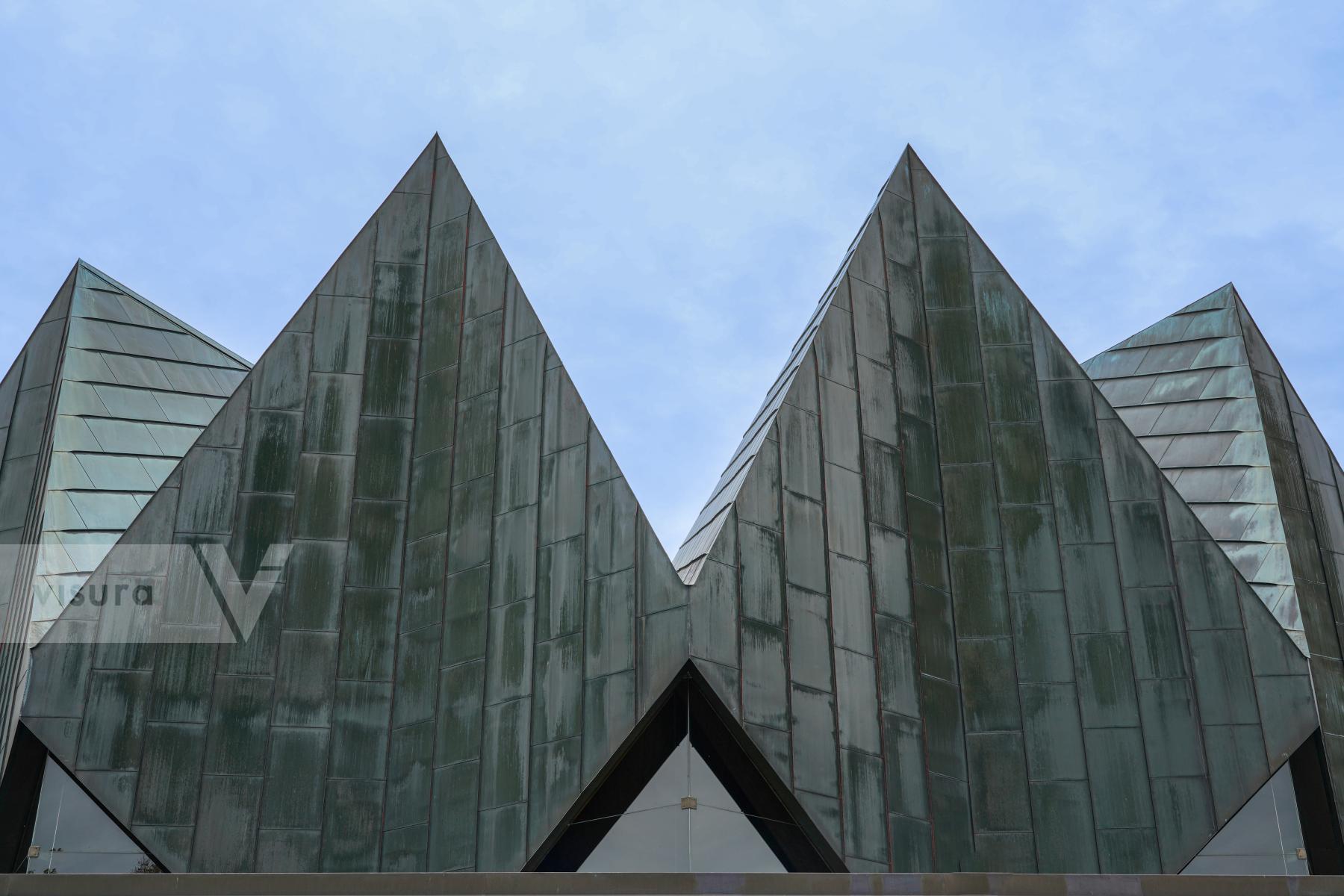
Landsberg (Lech), Germany
10/2023
# 3983
Folding construction of the roof of the city parish church "Zu den Heiligen Engeln" by architect Josef Wiedemann. The twelve unmistakable roof peaks are often interpreted as the "Tent of God" or, in keeping with the patrocinium, as outstretched angels' wings.
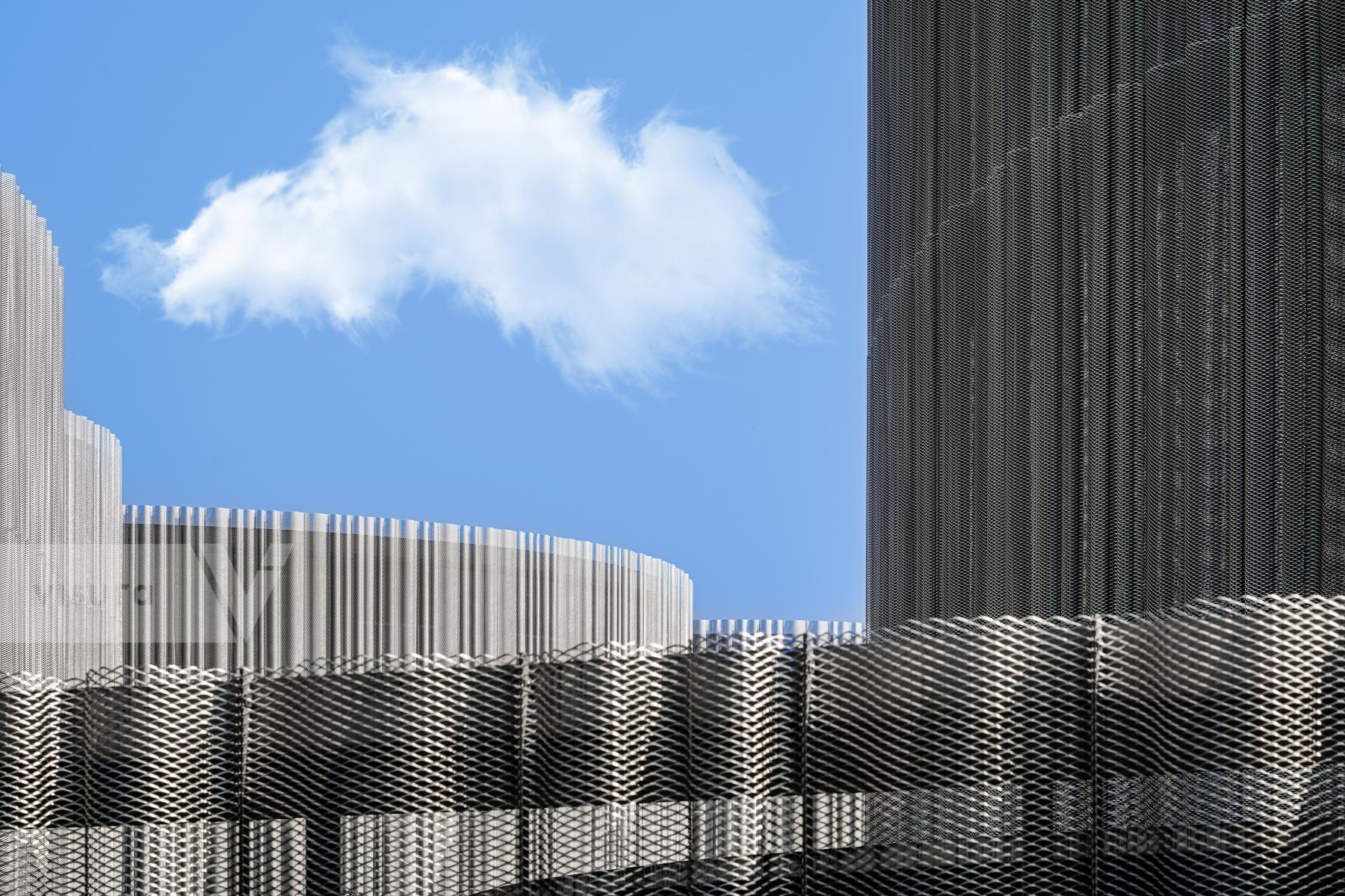
Milan, Italy
# 3999
5/2023
The new Bocconi campus in Milan, headquarters for the Bocconi School of Management alongside a sports centre. Designed by Kazuyo Sejima and Ryue Nishizawa, Sanaa architects. Transparent facades with curved lines, a perforated sheet metal cladding characterizes the buildings.

Enschede, The Netherlands
# 4071
10/2023
View of De Museumfabriek (formerly Jannink Museum of Textiles and Social Life and TwentseWelle), a museum in Enschede, the Netherlands. The new museum is located partly in a renovated Jannink textile factory, which refers to the textile history of Enschede, and partly in a neighbouring new building designed by the Amsterdam firm SeARCH. A reference to the textile tradition can be found in the façade of the tower building, which is reminiscent of weaving techniques. The project architect was Bjarne Mastenbroek.

Brussels, Belgium
# 4060
7/2023
External load-bearing columns characterise the appearance of the BNP Paribas Fortis headquarters building, the Montagne du Parc, and envelop the building like a dress. Honoured in 2023 with the International Property Awards, Europe in the category Best Office Architecture, Belgium. Designed by Baumschlager Eberle Architects.
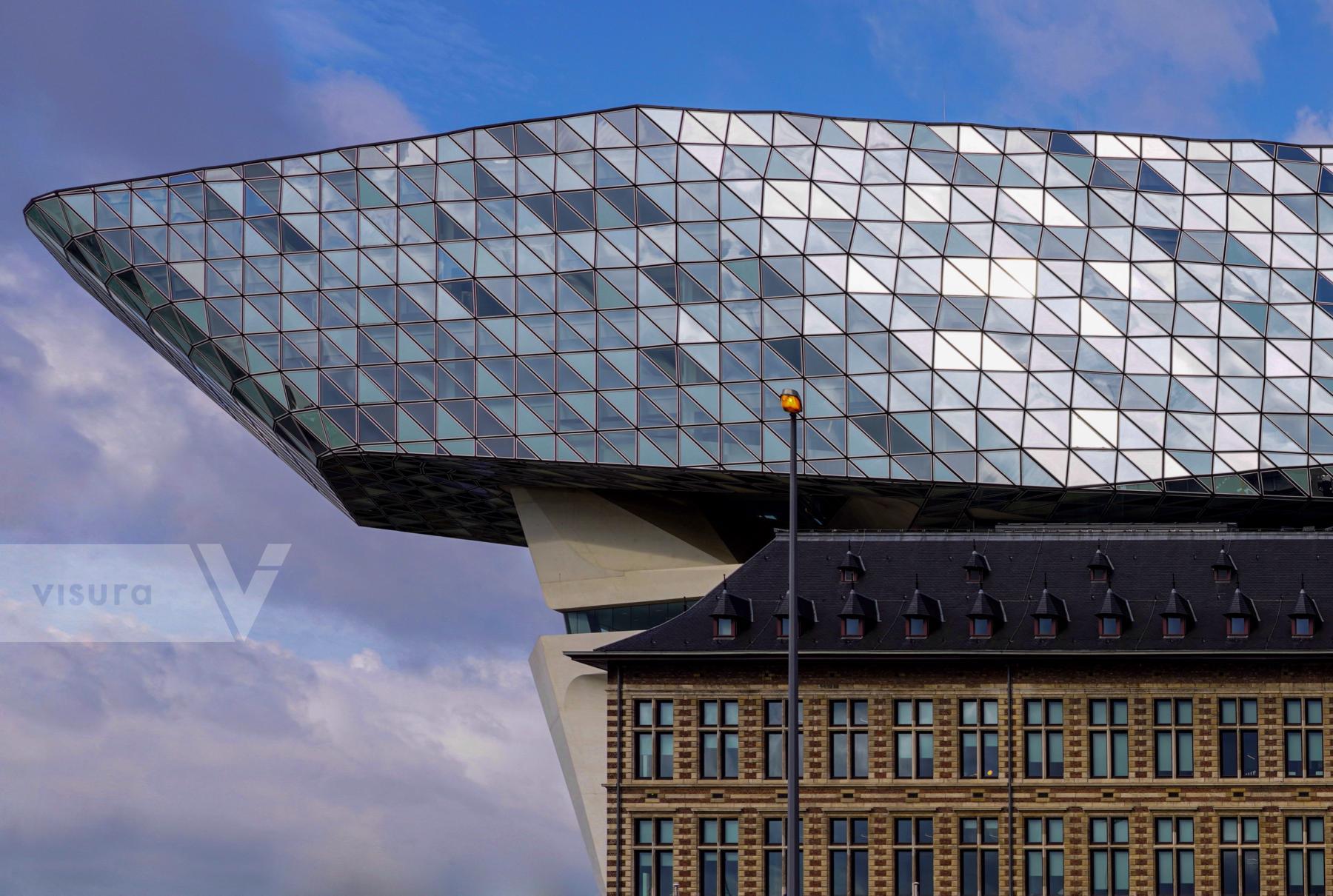
Antwerp, Belgium
# 3987
8/2023
Architectural Legacy: A Synthesis of Past and Future
The Port House in Antwerp stands as a testament to Zaha Hadid’s visionary talent, fusing historical architectural elements with futuristic design. The former fire station, a symbol of tradition, is grounded in history, while the new addition soars above, a crystalline structure of daring geometry and reflective glass. Together, they create an emblematic gateway to the port, encapsulating the dynamic pulse of a city that looks confidently forward while respecting its roots. Hadid’s legacy continues to inspire, through the fluid lines and bold forms that break boundaries, mirroring the continuous evolution of architecture itself.
Zaha Muhammad Hadid * 31 October 1950 in Baghdad; † 31 March 2016 in Miami, Florida was an Iraqi-British architect. In 2004, she became the first woman to receive architecture's most prestigious honour, the Pritzker Architecture Prize.
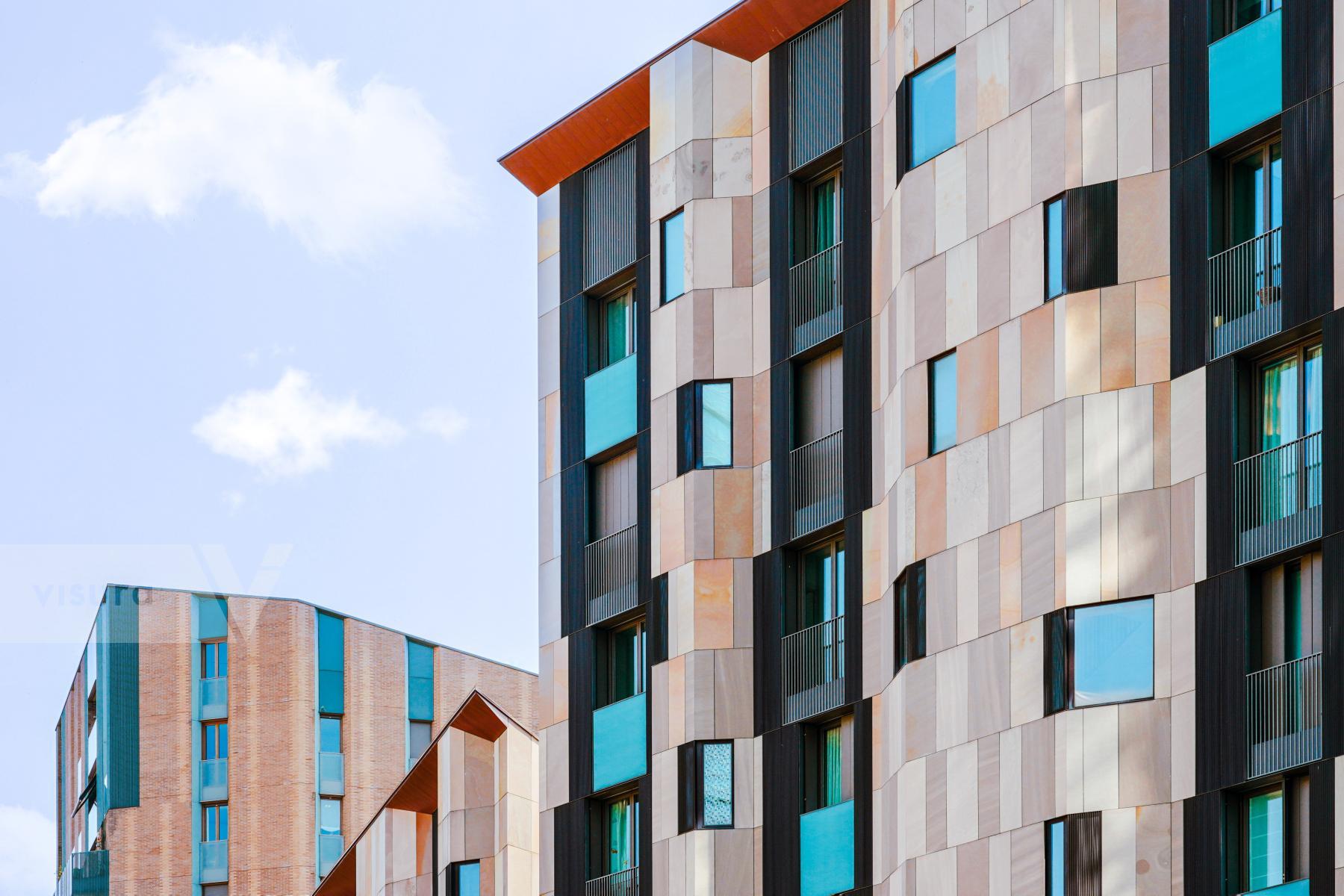
Milan, Italy
# 4007
5/2023
La Corte Verde di Corso Como, Apartment House complex by Cino Zucchi Architetti
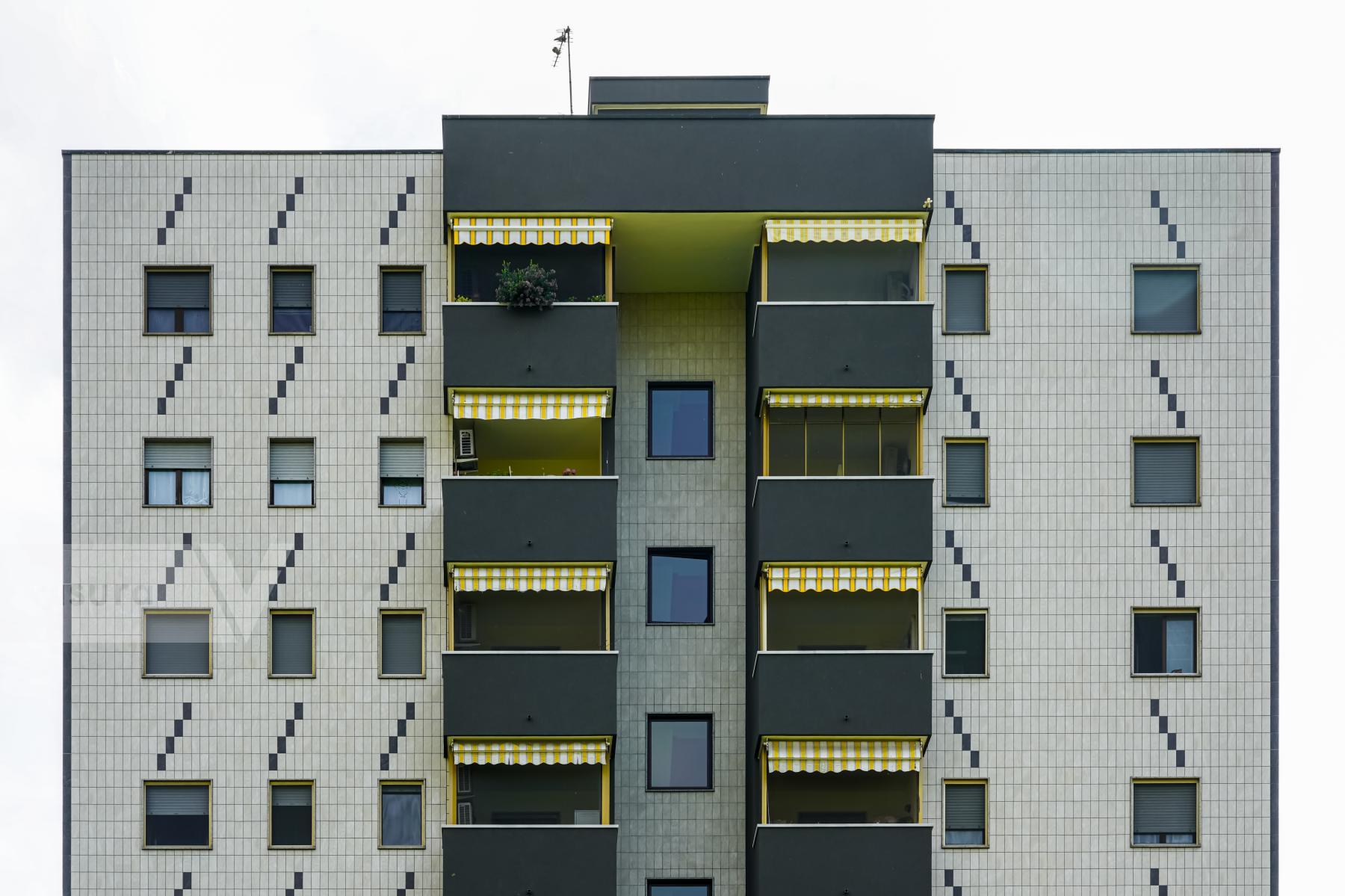
Milan, Italy
# 3916
5/2023
Residential building with balconies.
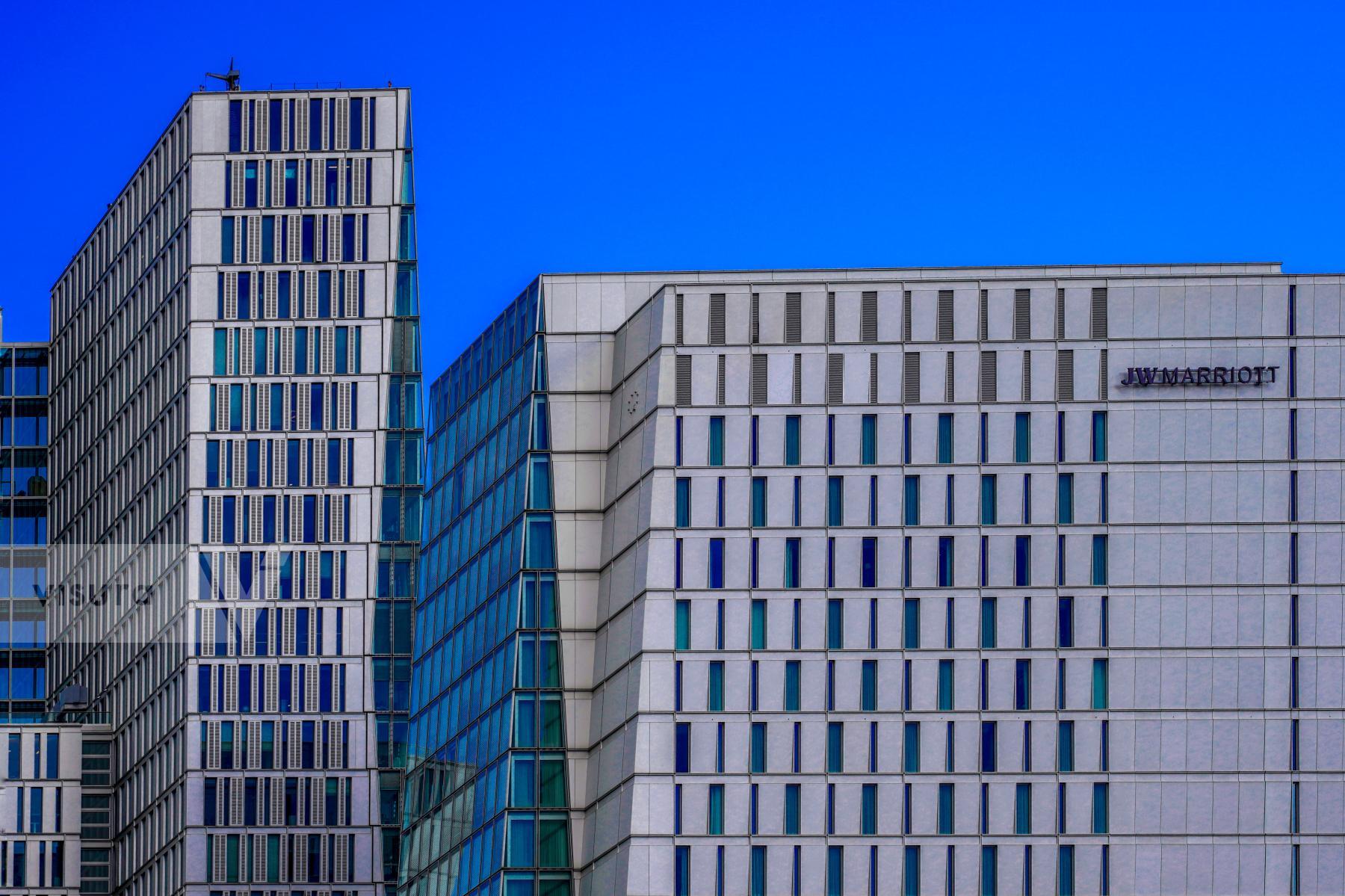
Frankfurt, Germany
# 4008
3/2023
German Documentation Center for Art History - Bildarchiv Foto Marburg, DDK (right) with adjacent new seminar building of Philipps University Marburg (left).
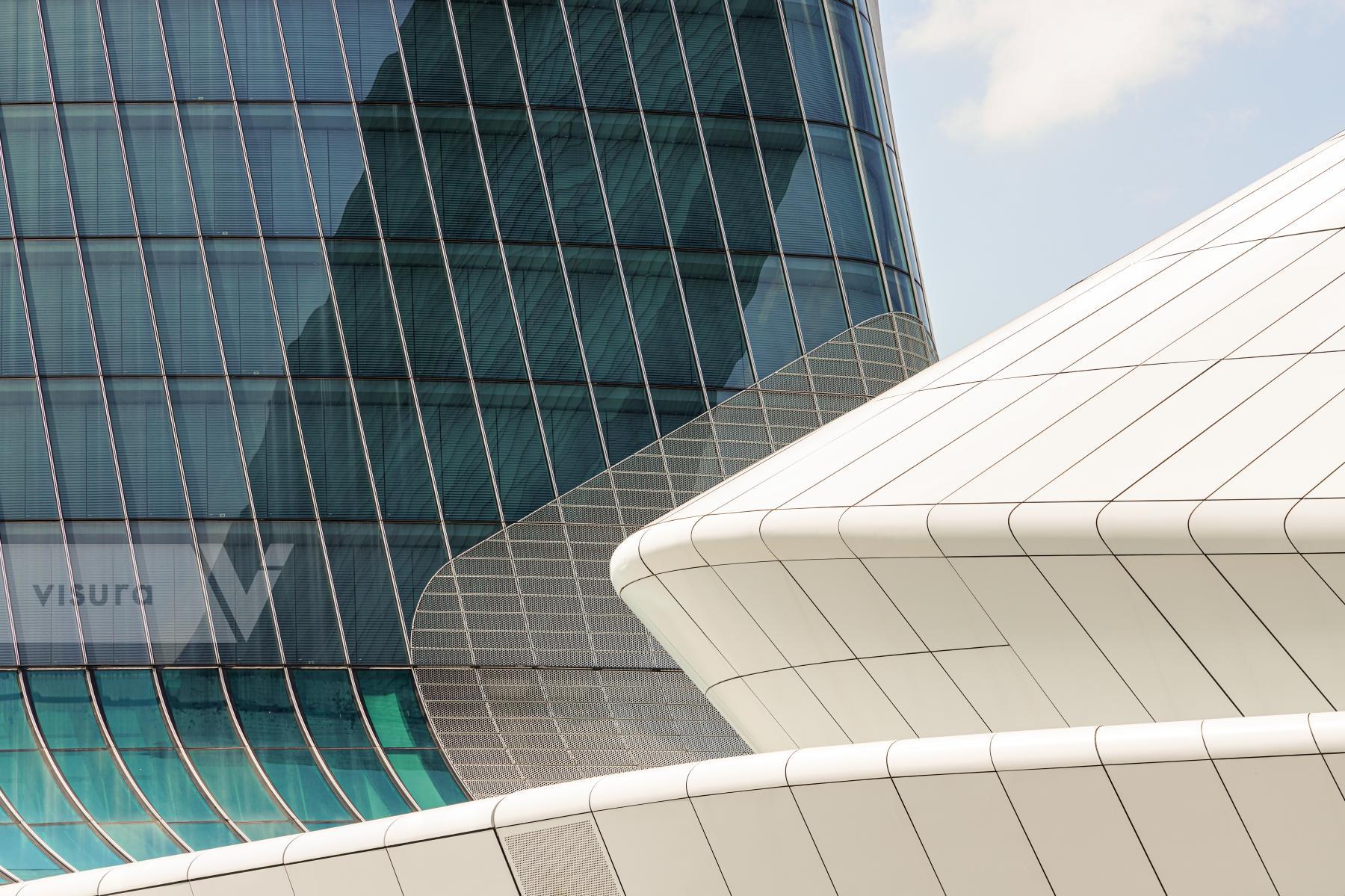
Milan, Italy
# 3928
5/2023
Architectural Symphonies: Harmony in Contrasts
This photograph masterfully juxtaposes the sinuous curves of Zaha Hadid’s CityLife Shopping District roof against the towering verticality of the Torre Generali in Milan. The image weaves together the iconic signature of Hadid’s fluid dynamics with the sleek, ascending lines of the Generali Tower, crafting a visual dialogue between organic forms and the geometry of modern design. It’s an eloquent reminder of how contemporary architecture can intertwine the sculptural and the structural, telling a story of a city’s march towards the future while honoring the aesthetics of form and function.
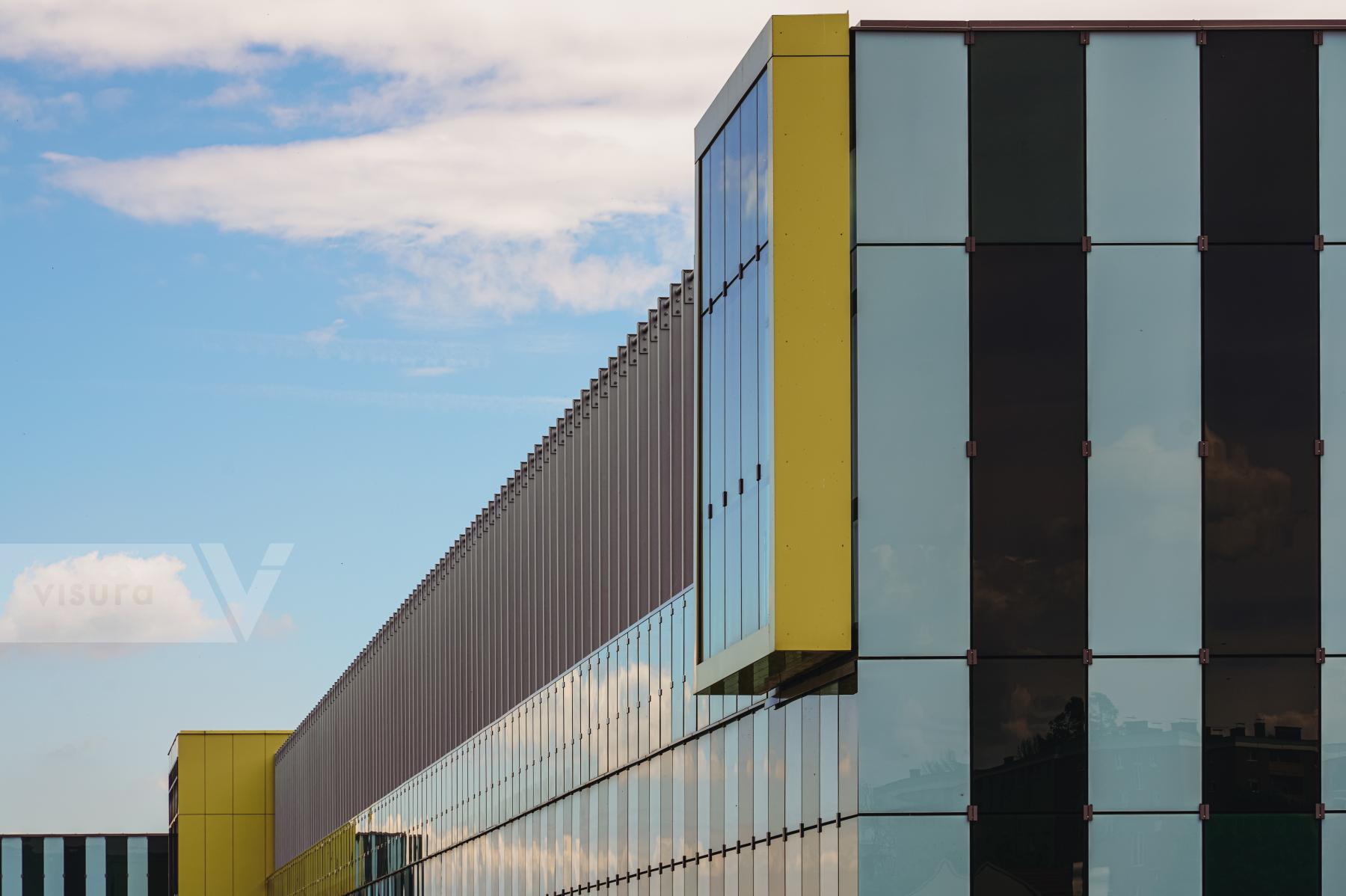
Maribor, Slovenia
# 3893
4/2023
Reflections in the exterior facade of the Faculty Of Medicine, University of Maribor, located in Maribor, in the Magdalena District, on the right bank of Drava river. It is one of the largest medical institutions in Slovenia,
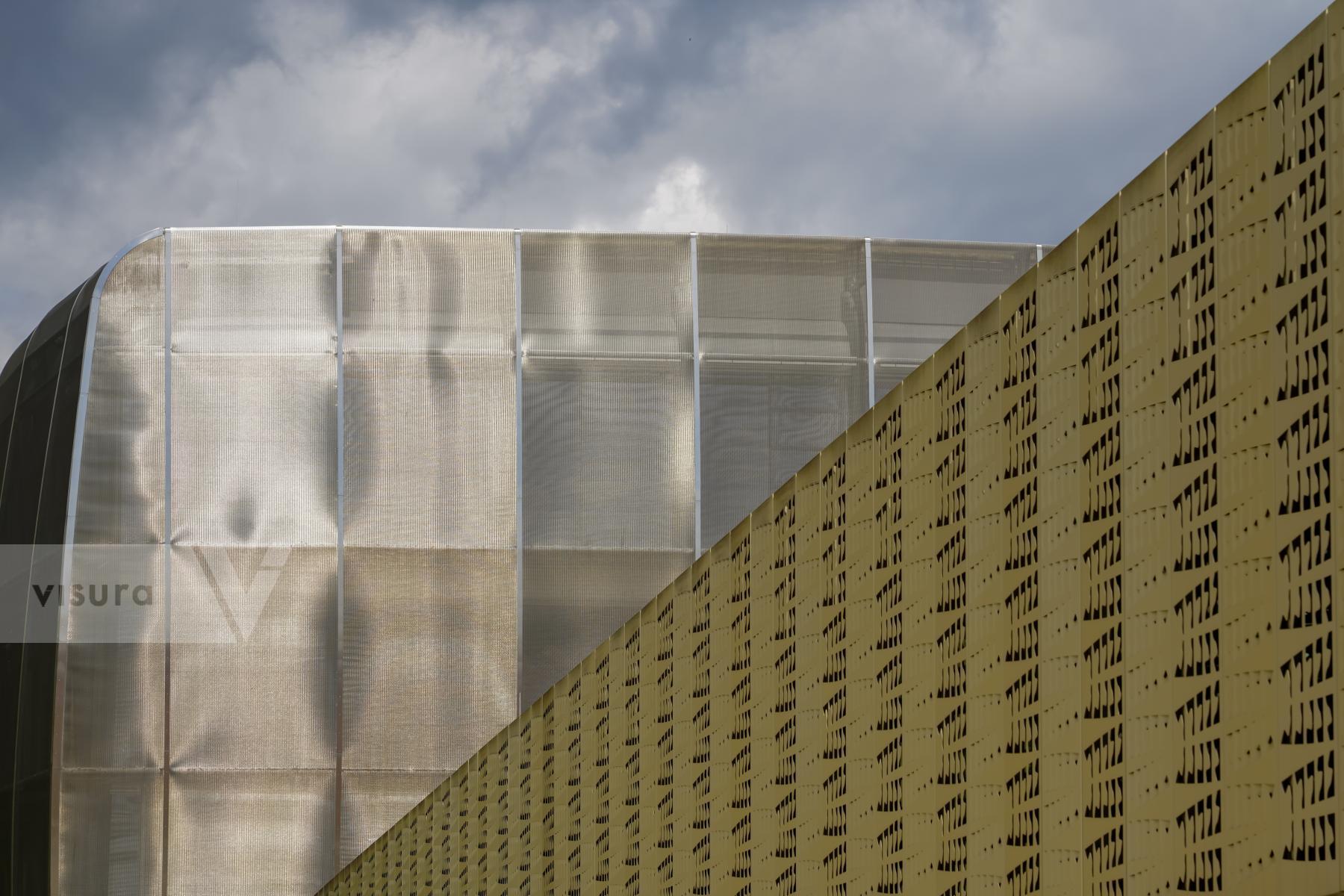
Graz, Austria
# 3897
4/2023
Facade of the "Theater im Palais" and MUMUTH, House for Music and Music Theater. The "Theater im Palais" (T.i.P.) of the Kunst Uni Graz is home to the Institute of Acting and rehearsal and stage rooms. The building was renovated according to the plans of architect Johannes Wohofsky. The most striking feature of the new outer shell is its "curtain" made of gold-colored, perforated aluminum sheeting, which visually accentuates the building. In the background is the MUMUTH, House for Music and Music Theater by Dutch architect Ben van Berkel which is dominated by the materials steel, concrete and glass in various combinations and superimpositions. It was awarded the Fischer von Erlach Prize and the Urban Land Institute Award in 2010.
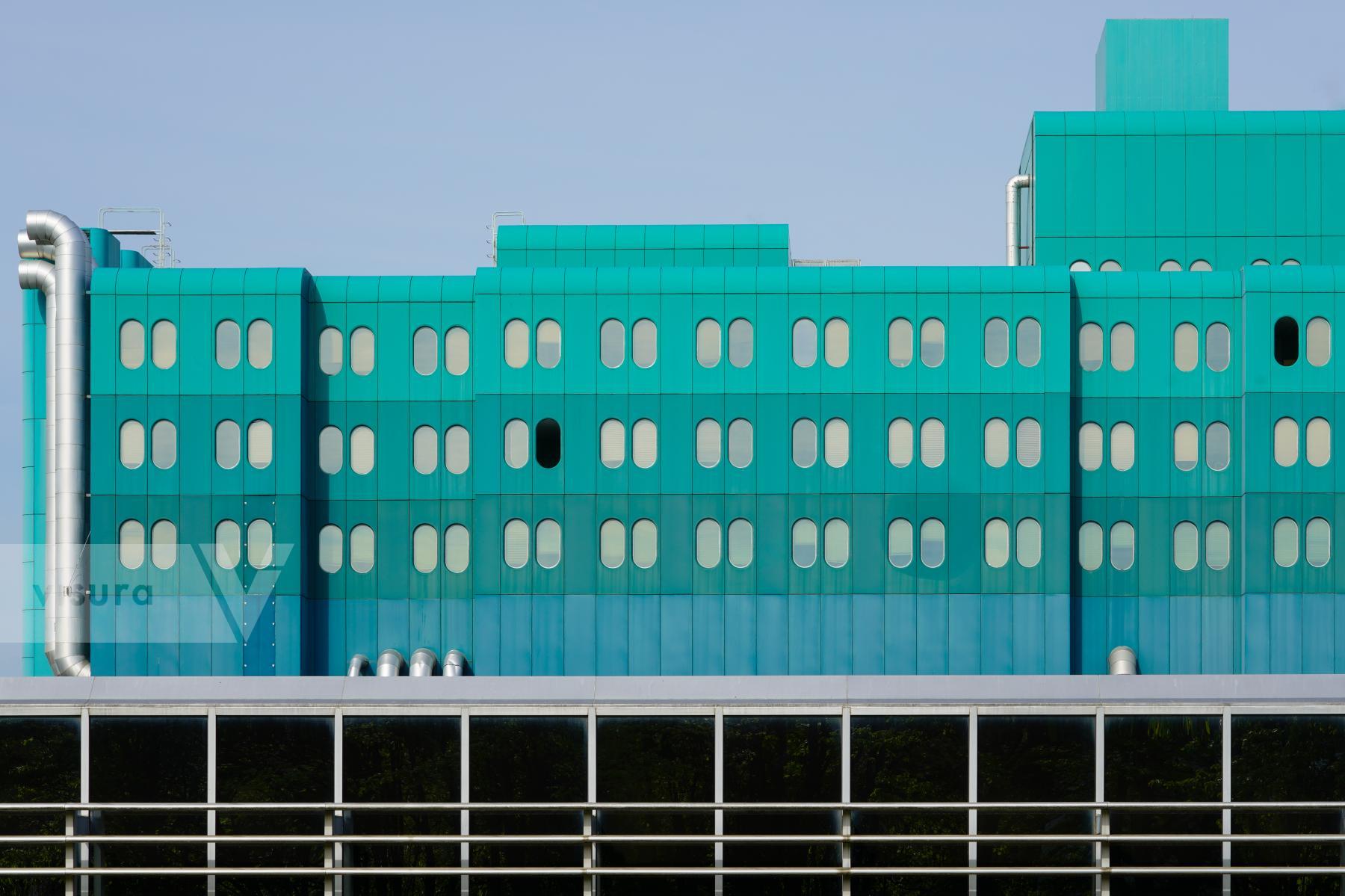
Zagreb, Croatia
# 3875
4/2023
Clinical Hospital Dubrava Zagreb, Croatia. It was originally built as a large military hospital. At the end of 1992 it was opened as a public medical facility. On 2 November 2020, Clinical Hospital Dubrava became a special COVID-19 hospital.

Milan, Italy
# 3914
5/2023
Office Building Complex, Location of the Milan Tax Court of First Instance, among others, Corte di Giustizia Tributaria di primo grado di Milano.
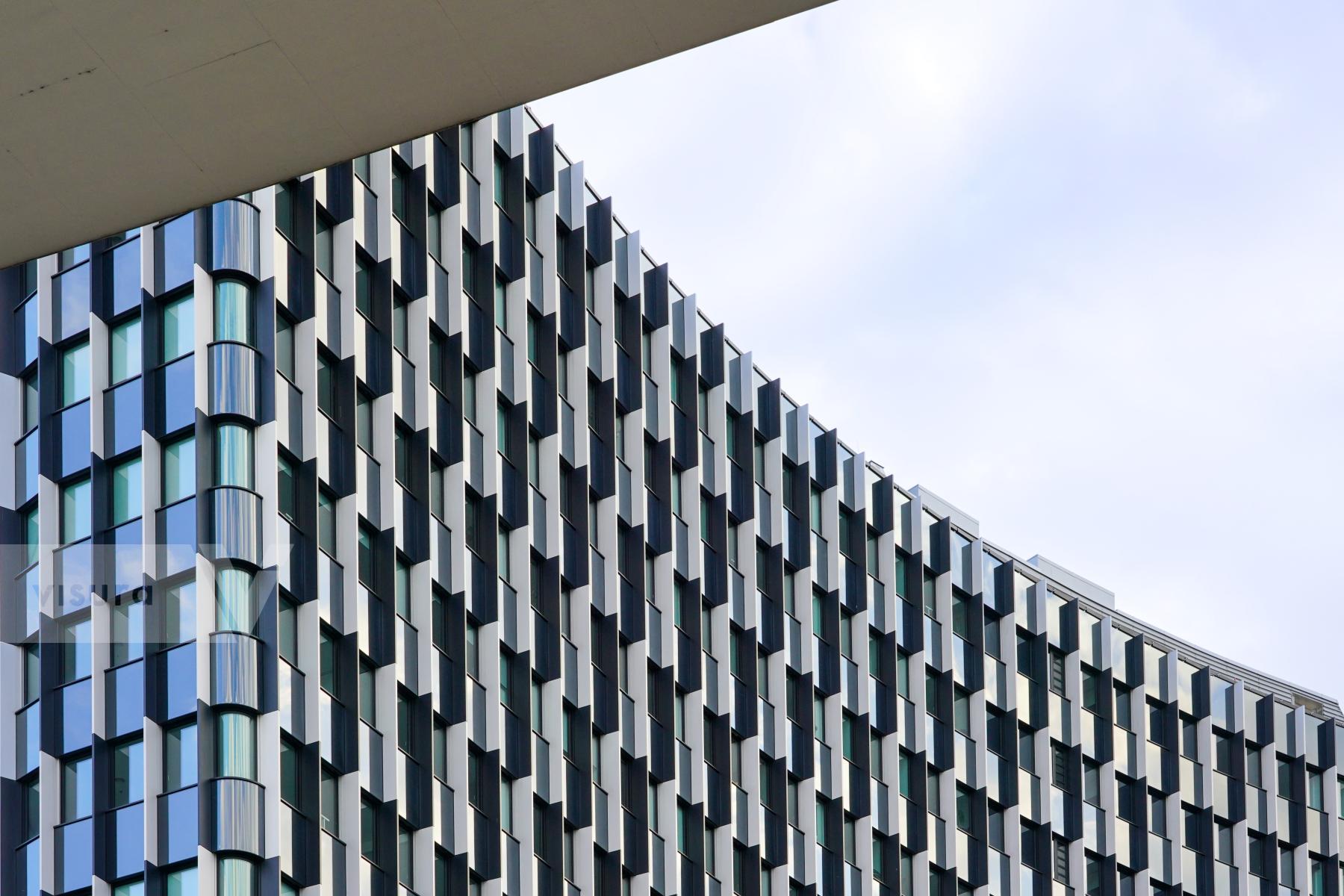
Graz, Austria
# 3883
4/2023
Styria Media Center in the Jakomini district of Graz, headquarters of the Styria Media Group, a 60-meter, 15-story tower.
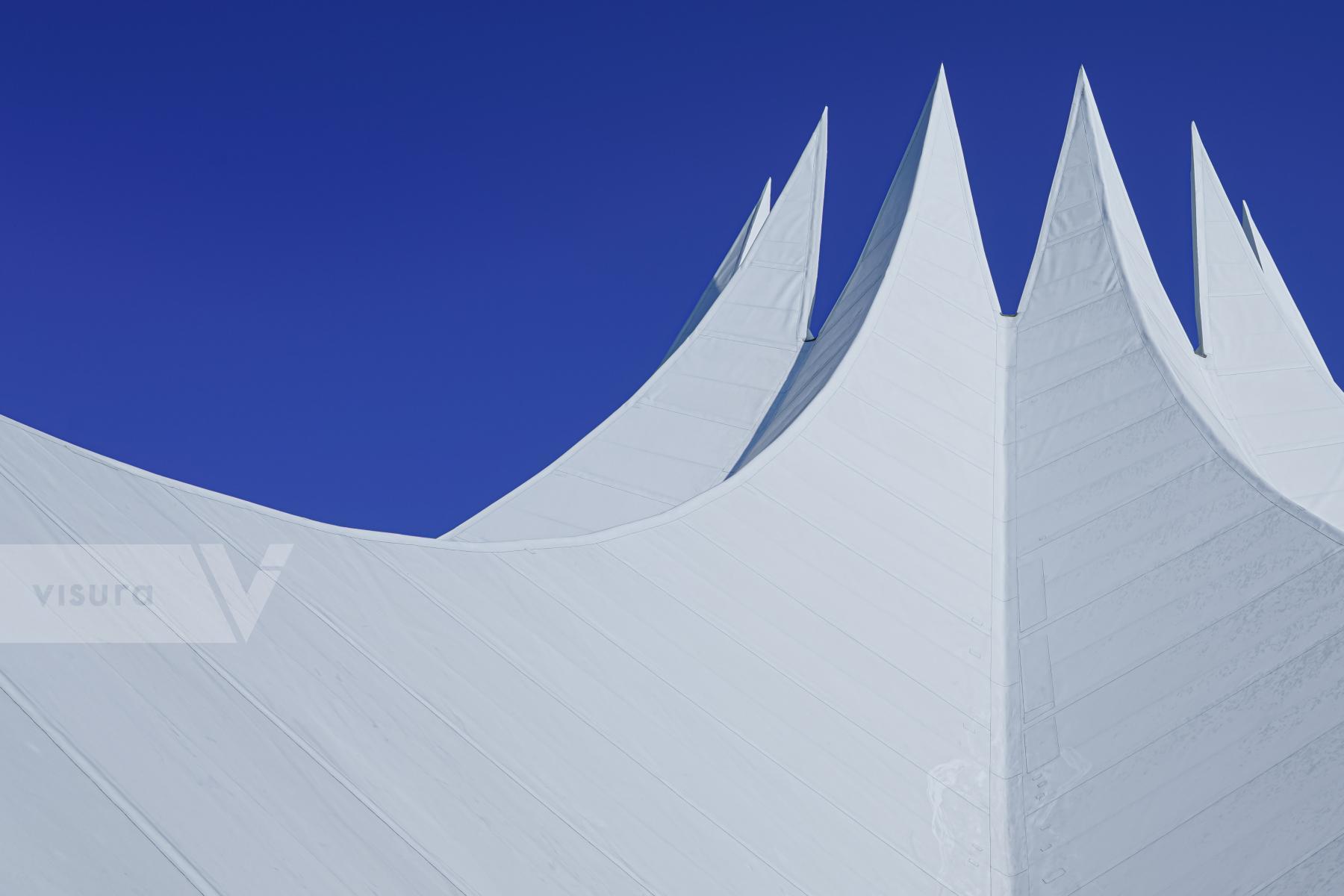
Berlin, Germany
# 3742
9/2022
The Tempodrom is a Berlin venue that was initially launched in 1980 as an alternative venue on the west side of Potsdamer Platz, in the immediate vicinity of what was then the Berlin Wall, in the form of a circus tent. The new Tempodrom building was constructed in 2001 according to designs by Doris Schäffler and Stephan Schütz of the architectural firm Gerkan, Marg and Partners. The 37-meter-high roof structure with its futuristic white forms is reminiscent of Oscar Niemeyer's Brasília Cathedral. Visually, it is based on the shape of a circus tent.
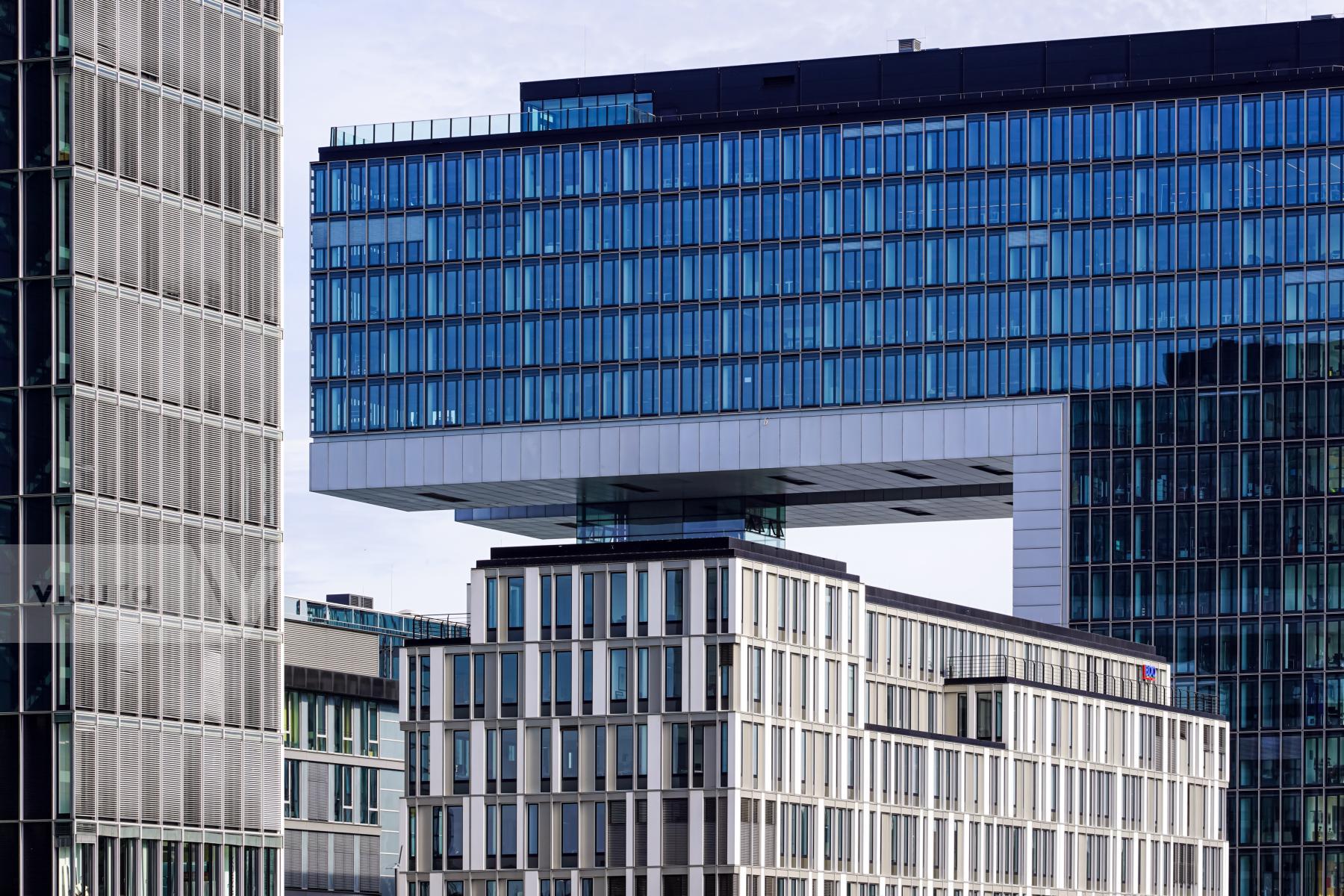
Cologne, Germany
# 3495
5/2022
Close-up of one of the three crane buildings, a high-rise, 70.20 meters long and 33.75 meters wide in Cologne's Rheinauhafen in the Altstadt-Süd designed by Aachen architect Alfons Linster and Hamburg architects Bothe, Richter, Teherani (BRT).

Luxembourg City, Luxembourg
# 3627
7/2022
The Philharmonie Luxembourg is a concert hall in the city of Luxembourg built from 2002 to 2005 in the district Kirchberg at the Place de l'Europe. The architect is Christian de Portzamparc. The white main building has the shape of an eye in plan. The steel and glass facade is visually dominated by 823 white columns 20 meters high and 30 centimeters in diameter.
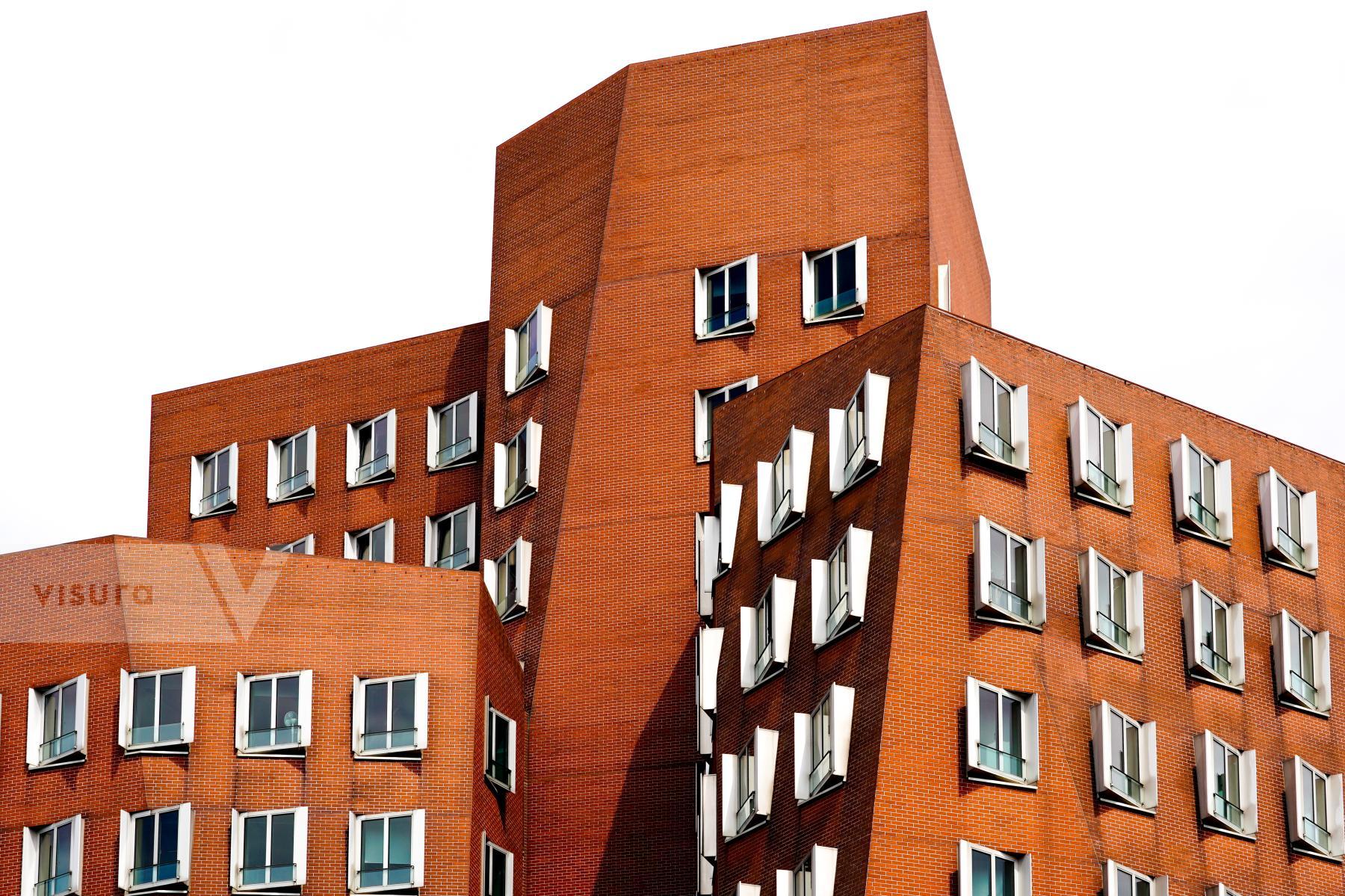
Düsseldorf, Germany
# 3457
5/2022
The Neue Zollhof is an ensemble of buildings in Düsseldorf's Media Harbor. The buildings are named after their creator, the Canadian-US architect and designer, Frank Owen Gehry, also known as the Gehry Buildings. The image shows House A which is completely clinkered.
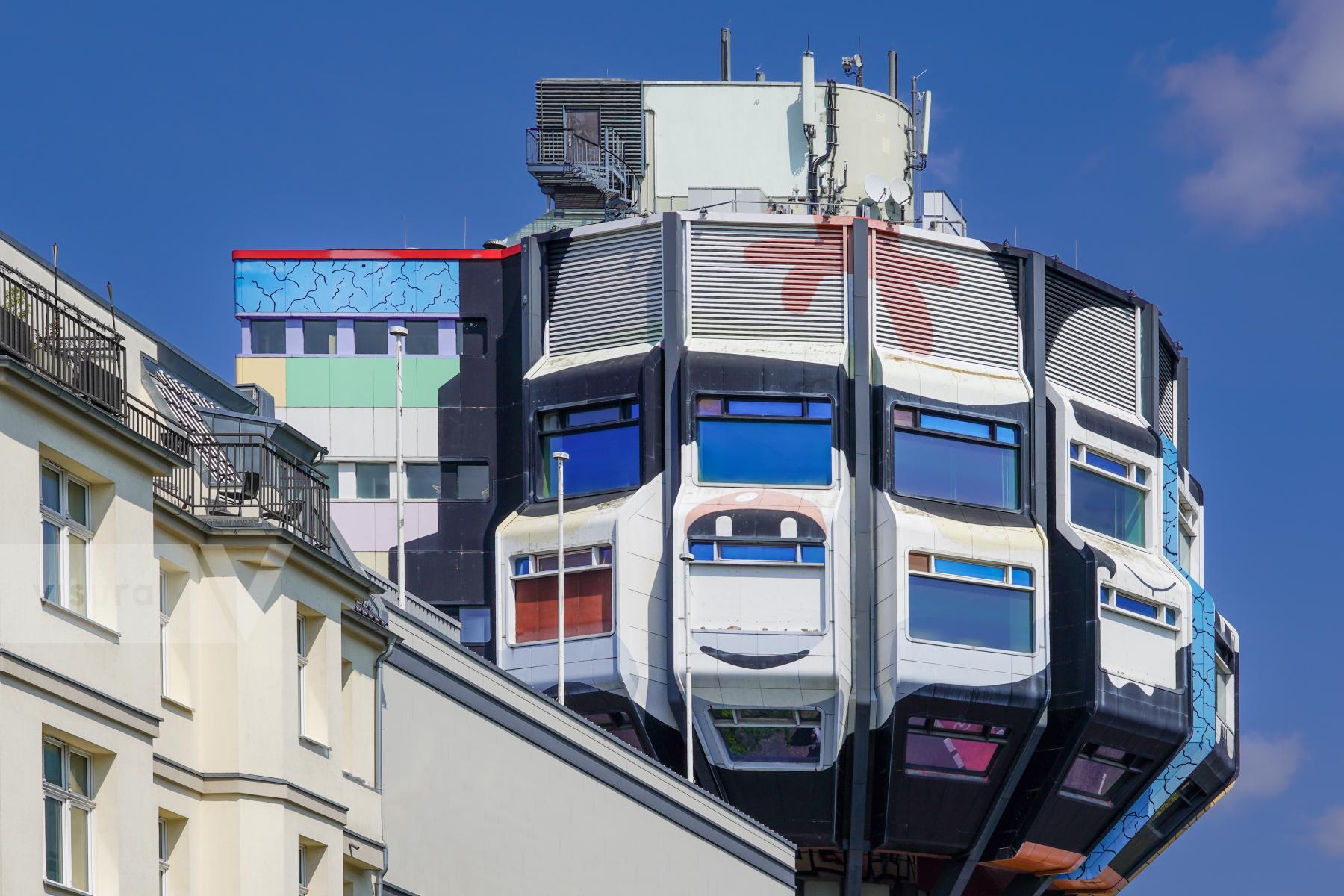
Berlin, Germany
# 3388
5/2022
The so-called Bierpinsel is a 47-meter-high building in the futuristic pop architecture of the 1970s in the Steglitz district of Berlin. (Close up dome). The building was constructed between 1972 and 1976 according to plans by architects Ralf Schüler and Ursulina Schüler-Witte. The building was Filming location of the Netflix series “Dogs of Berlin”.

The Hague, The Netherlands
# 3449
5/2022
Kaleidoscope Threshold: Entry Through a Spectrum
The entrance to the Dutch Ministry of Finance in The Hague is a vibrant passage, where stripes of metal array in a spectrum of colors, leading visitors into a realm where economic strategies and fiscal policies are crafted. This symphony of hues at Korte Voorhout 7 is not merely an aesthetic choice but a metaphor for diversity and inclusion, embodying the complex, multifaceted nature of finance and governance. As light dances off these metallic ribbons, the gates stand as a modern tapestry, weaving together the threads of creativity and structure in the heart of Dutch bureaucracy.
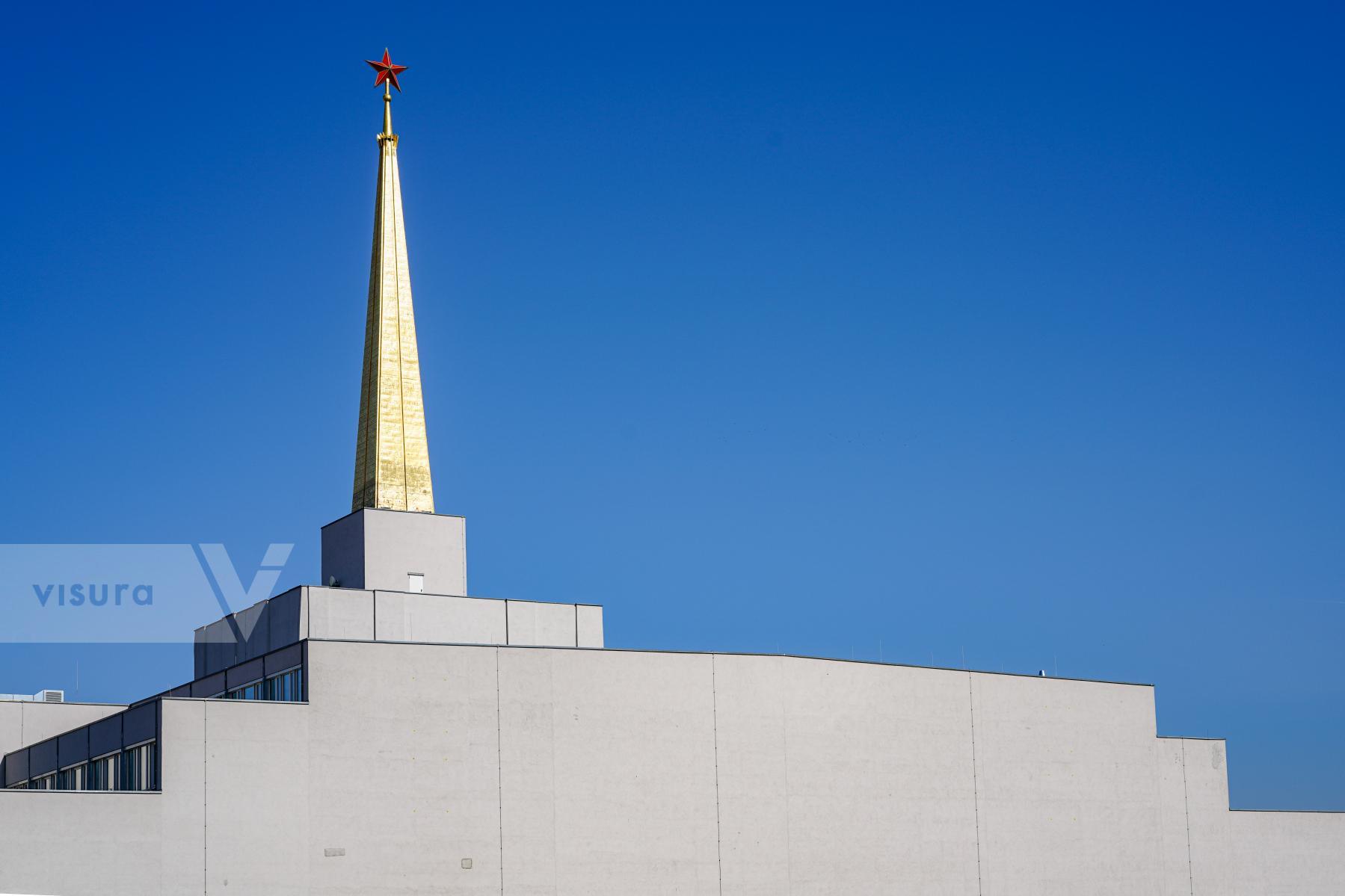
Leipzig, Germany
# 3187
3/2022
The Leipzig City Archives on the Old Exhibition Grounds in the converted former Soviet exhibition pavilion. Above the building still the Soviet star; it is a listed building. The City Archive documents the history of Leipzig with evidence since the Middle Ages.
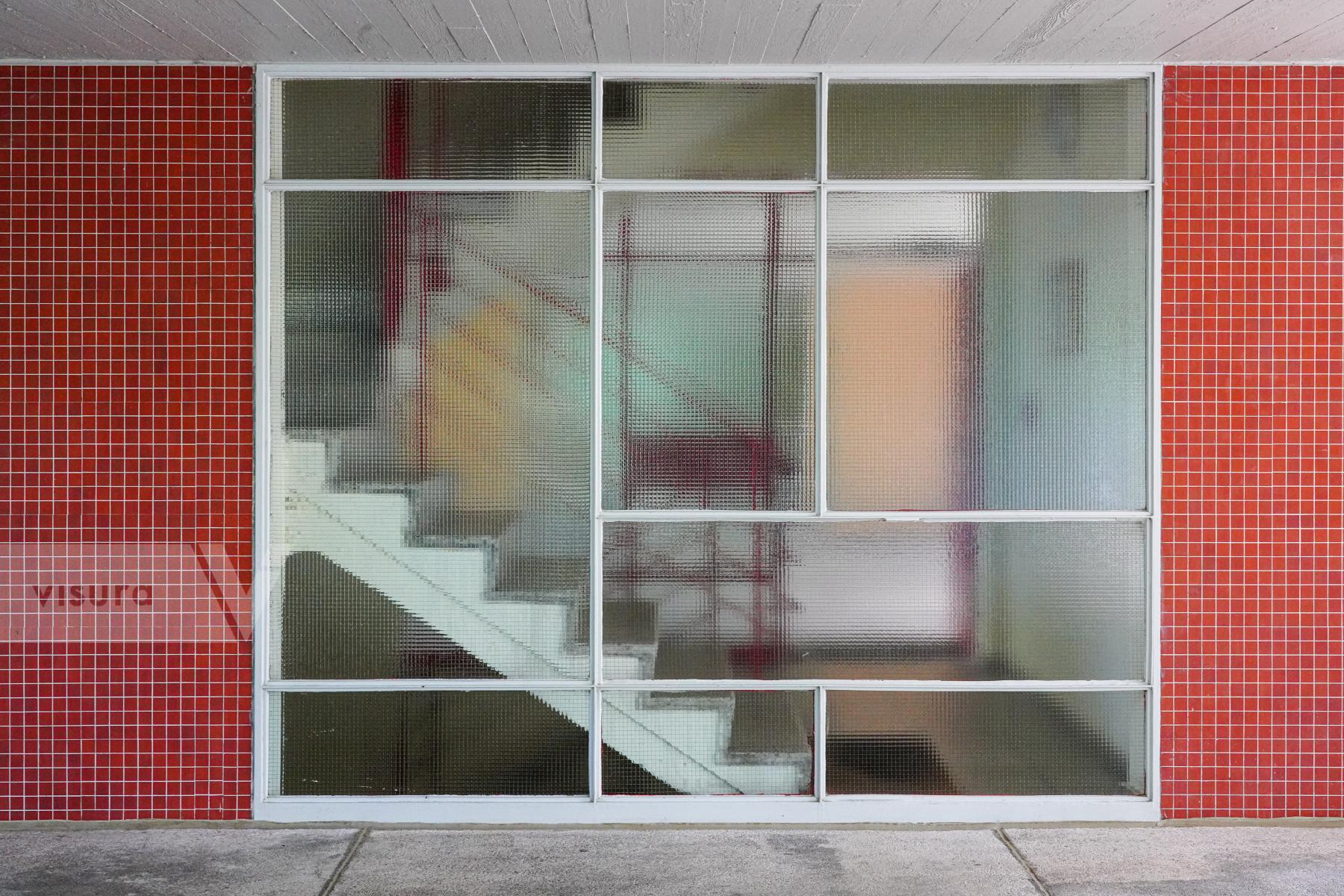
Berlin, Germany
# 3367
4/2022
View through a glass pane into a staircase of the Oscar-Niemeyer-Haus in the Hansaviertel district of Berlin. The high-rise building designed by Brazilian architect Oscar Niemeyer at Altonaer Straße 4-14 on the occasion of the first International Building Exhibition (IBA 1957).
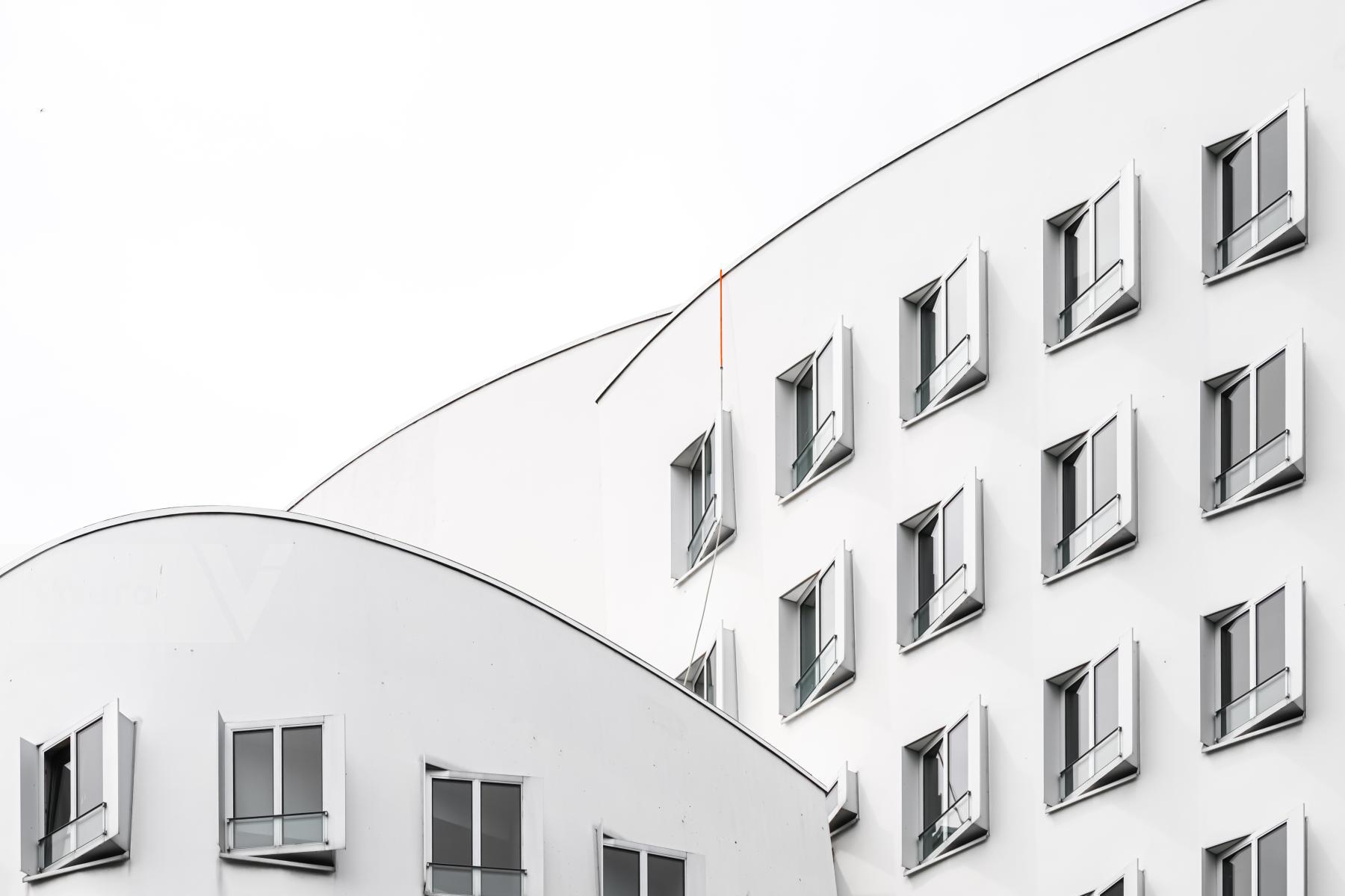
Düsseldorf, Germany
# 3458
5/2022
The Neue Zollhof is an ensemble of buildings in Düsseldorf's Media Harbor. The buildings are named after their creator, the Canadian-US architect and designer, Frank Owen Gehry, also known as the Gehry Buildings. The image shows House C which is white plastered and has a nested building volume with large-format curves.
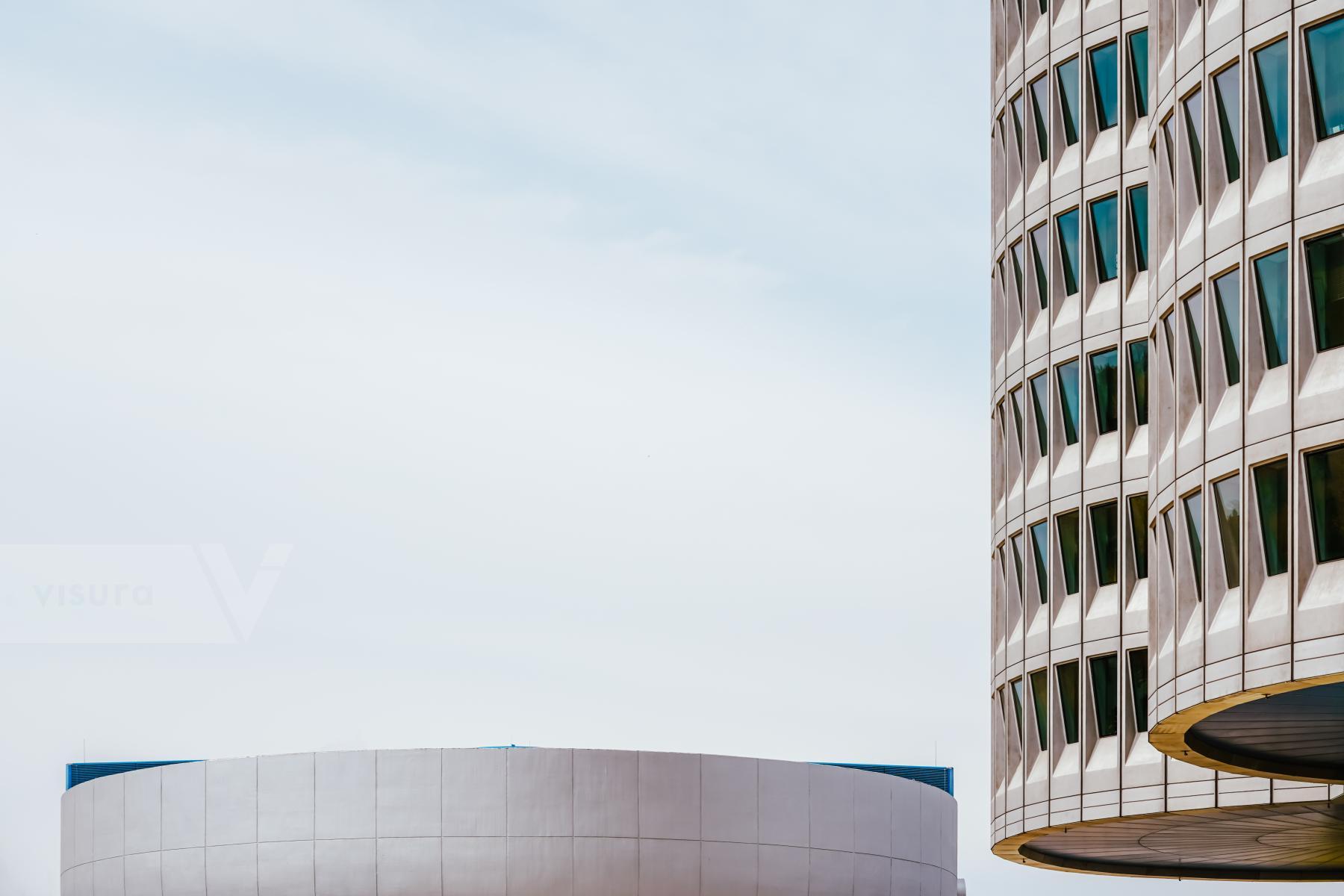
Munich, Germany# 3293
4/2022
Detailed view of the roof of the BMW Museum (left) and deatail of the BMW Tower (right). The
BMW Museum opened in 1973 shortly after the Summer Olympics. The silver futuristic building has a circular footprint of 20 meters in diameter and a flat roof of about 40 meters. An oversized BMW logo is on the flat roof. The listed circular museum building, the so-called bowl with the neighboring low-rise building, stands directly next to the BMW high-rise and is the symbol of the BMW Museum. The BMW four-cylinder, the
BMW Tower is BMW's main administrative building in Munich. The building is 101 m high and is located near Munich's Olympic grounds. The BMW Museum is located directly next to the BMW Four-Cylinder, and BMW Welt is opposite. The BMW skyscraper consists of four vertical cylinders arranged next to each other in a cross shape, with each cylinder being divided horizontally once again by pulling back the façade above the center. The building was completed for the 1972 Summer Olympics. The architect was the Austrian Karl Schwanzer, who also designed the BMW Museum.
Discover the series
Perfection in Blue-White
The BMW Architecture Ensemble in Munich
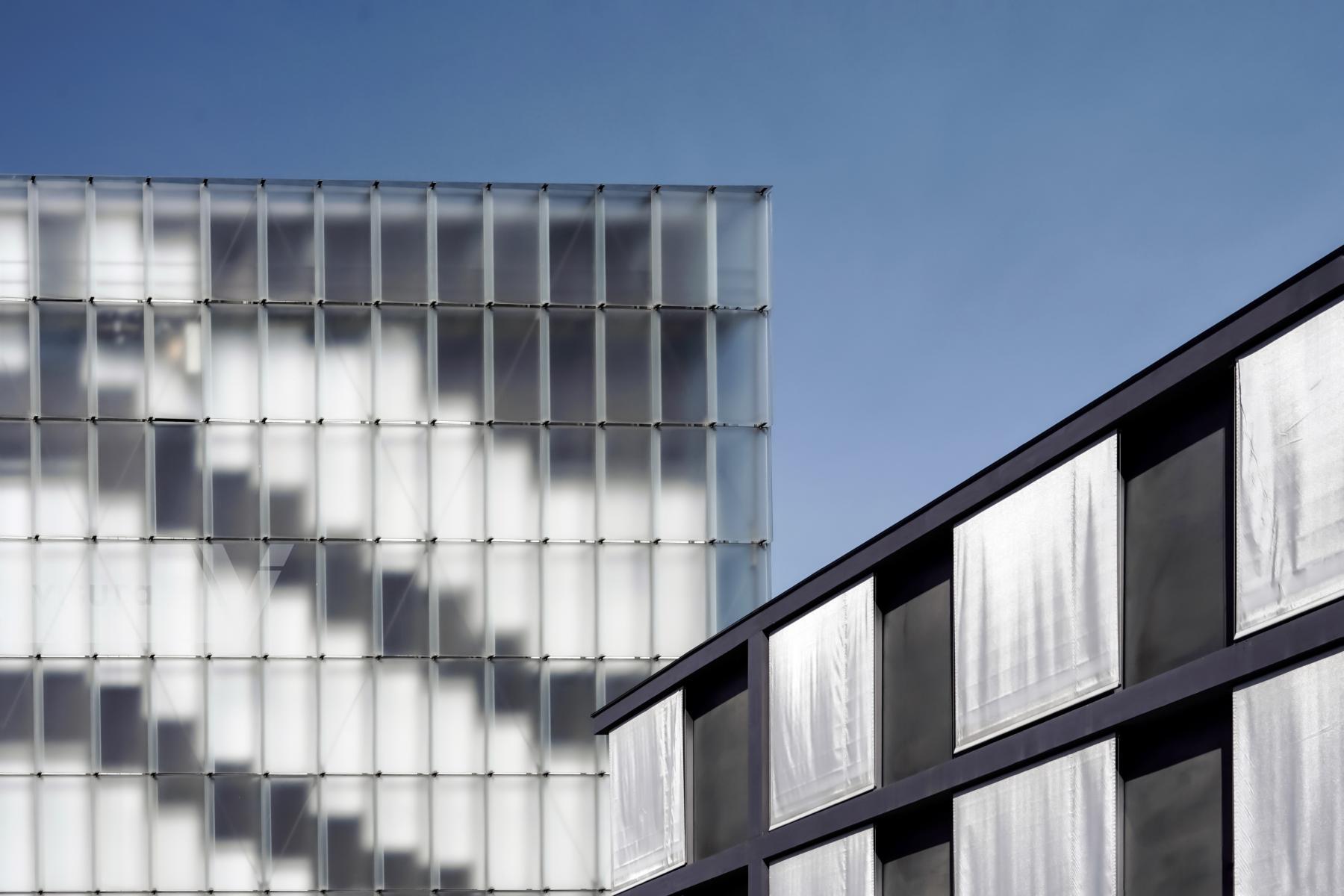
Bregenz, Austria
# 2457
10/2021
Facade of the Kunsthaus Bregenz (KUB for short). The museum shows international contemporary art in changing exhibitions in the Vorarlberg capital Bregenz. The body of the building consists of finely etched, equally sized milky glass-like glass panels held in place by brackets. "The Kunsthaus stands in the light of Lake Constance. Its body is built of glass plates, steel and a stone mass of poured concrete, which forms structure and space inside the house. Seen from the outside, the building looks like a luminous body. It absorbs the changing light of the sky, the haze light of the lake, radiates light and color back and, depending on the angle of view, time of day and weather, leaves something of its inner life, says the architect Peter Zumthor about his work of art, which was awarded the Mies van der Rohe Award for European Architecture in 1998.
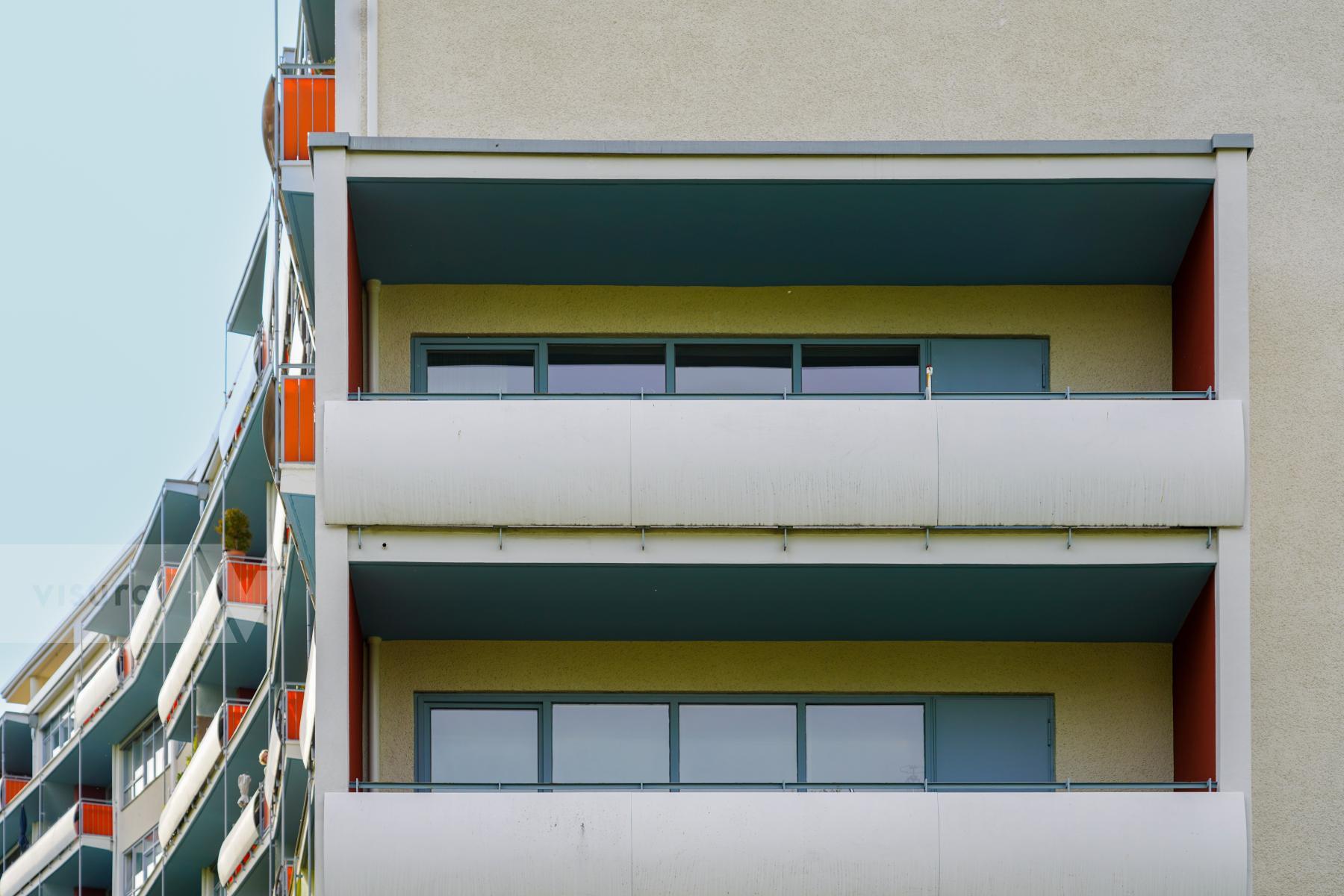
Berlin, Germany
# 3368
4/2022
The Gropius House at 3-9 Händelallee in Berlin's Hansa district, a joint project by Bauhaus founder Walter Gropius and Berlin architect Wils Ebert. Detail view from the east with loggias pulled out. The south facade of the building develops a lively, decorative effect through the graphic arrangement of the projecting balconies. It stands in stark contrast to the formal and functional austerity of earlier residential buildings realized by Walter Gropius before the Second World War.
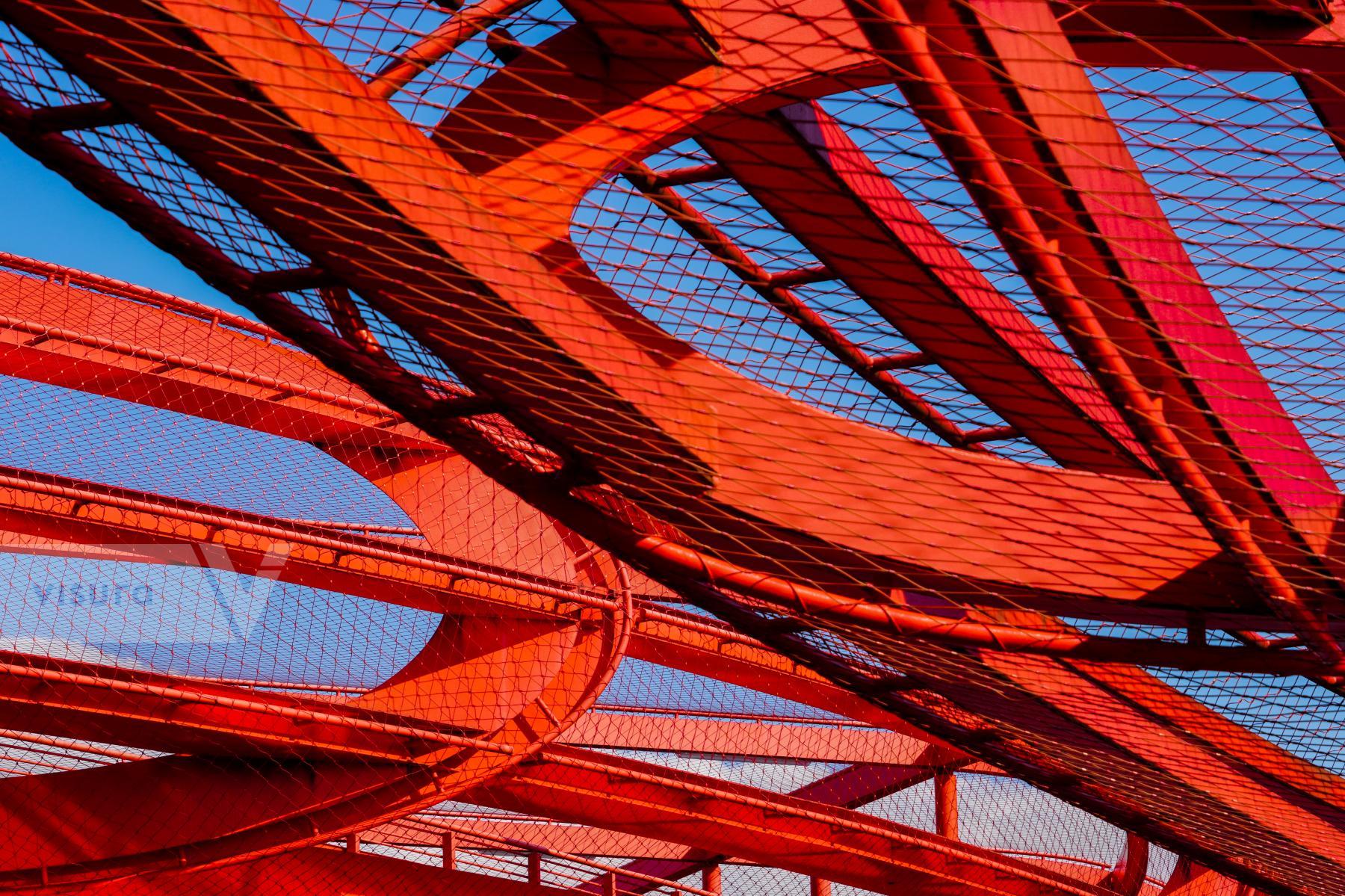
Salzburg, Austria
# 3826
3/2022
Rooftop of the parking lot of shopping mall Europark Salzburg.
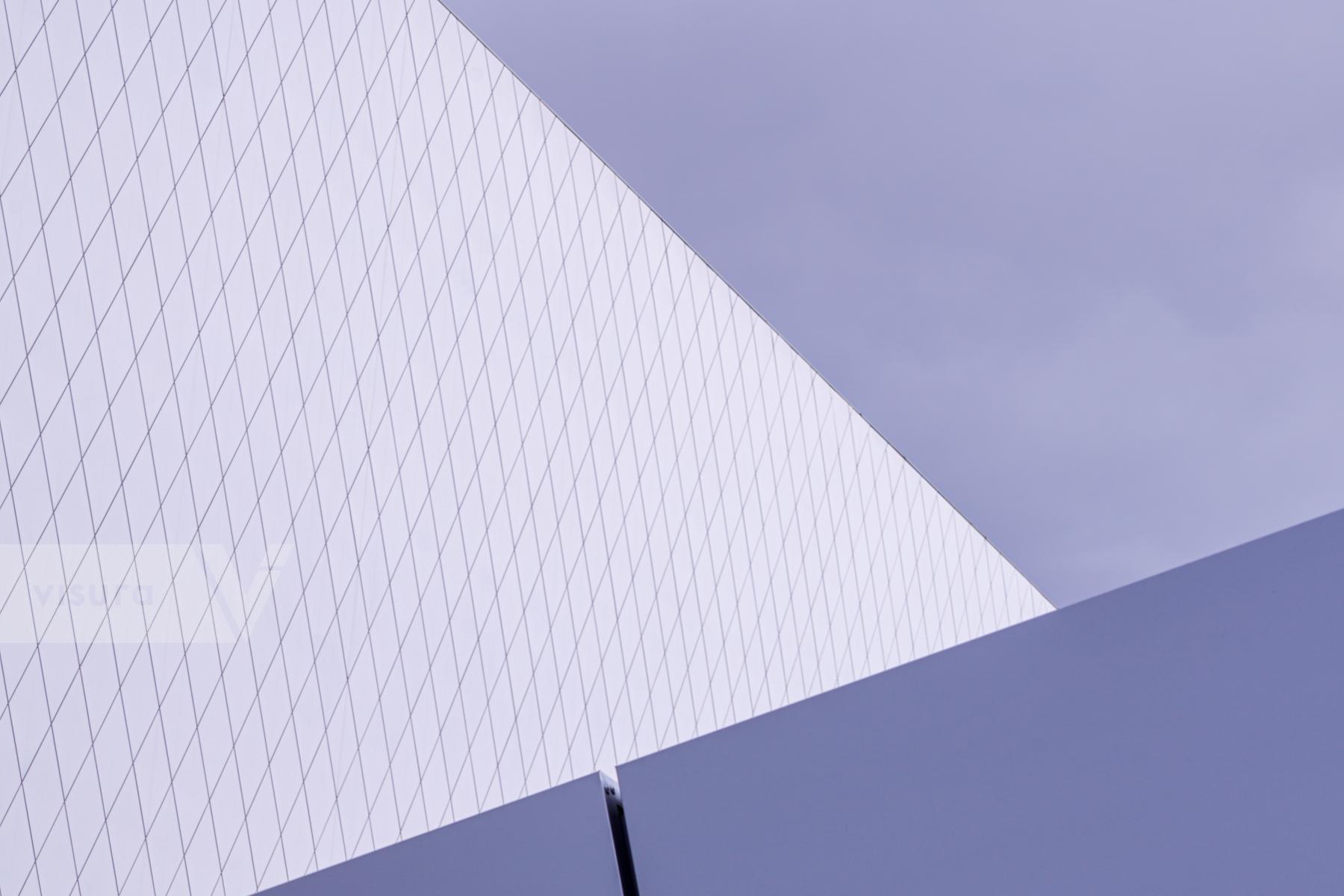
Stuttgart, Germany
# 3836
3/2023
Architectural details of the Porsche Museum. Delugan Meissl Associated Architects from Vienna.
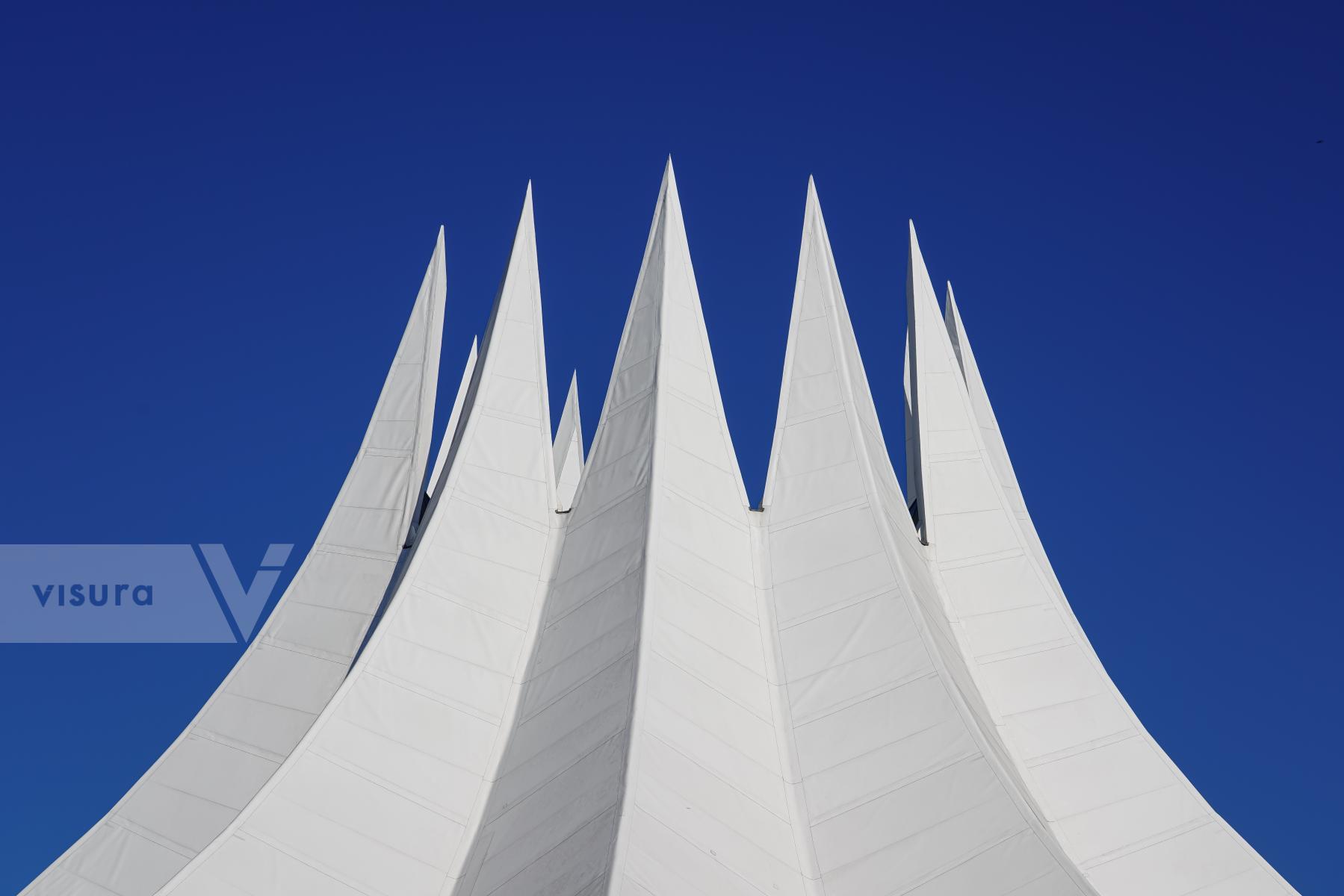
Berlin, Germany
# 3741
9/2022
The Tempodrom is a Berlin venue that was initially launched in 1980 as an alternative venue on the west side of Potsdamer Platz, in the immediate vicinity of what was then the Berlin Wall, in the form of a circus tent. The new Tempodrom building was constructed in 2001 according to designs by Doris Schäffler and Stephan Schütz of the architectural firm Gerkan, Marg and Partners. The 37-meter-high roof structure with its futuristic white forms is reminiscent of Oscar Niemeyer's Brasília Cathedral. Visually, it is based on the shape of a circus tent.
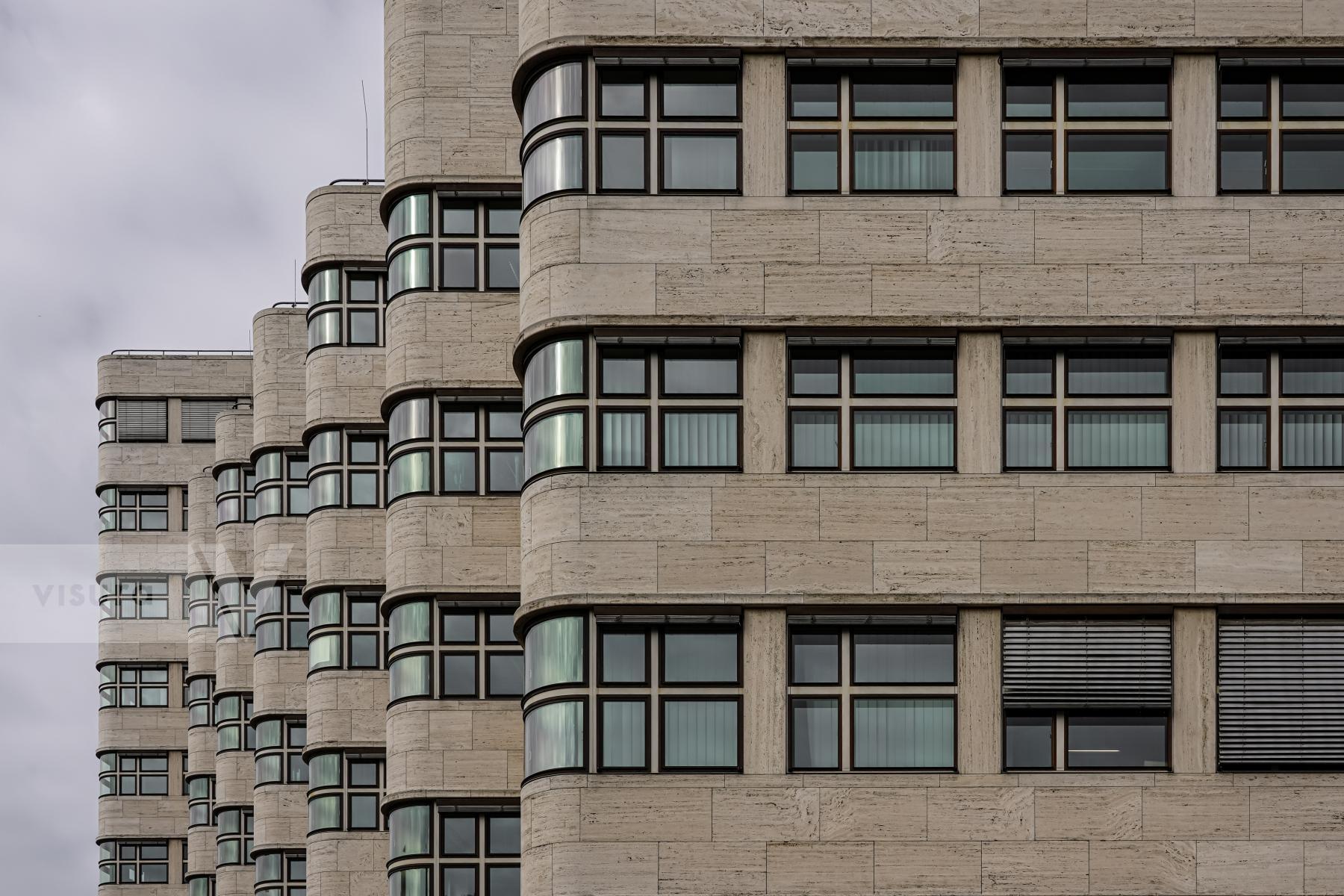
Berlin, Germany
# 3752
9/2022
The Shell-Haus on the Landwehrkanal near Potsdamer Platz, with its facade, is one of the most important office buildings of classical modernism in Berlin. Stylistically, it belongs to the New Objectivity movement and is one of the architecturally most important office buildings from the Weimar Republic, built in 1931 according to plans by Emil Fahrenkamp, as the headquarters of the Shell subsidiary Rhenania-Ossag Mineralölwerke. The design is determined by vertical waveforms of varying heights and a consistent horizontal articulation through bands of windows, which also extend beyond the curves on the outside.
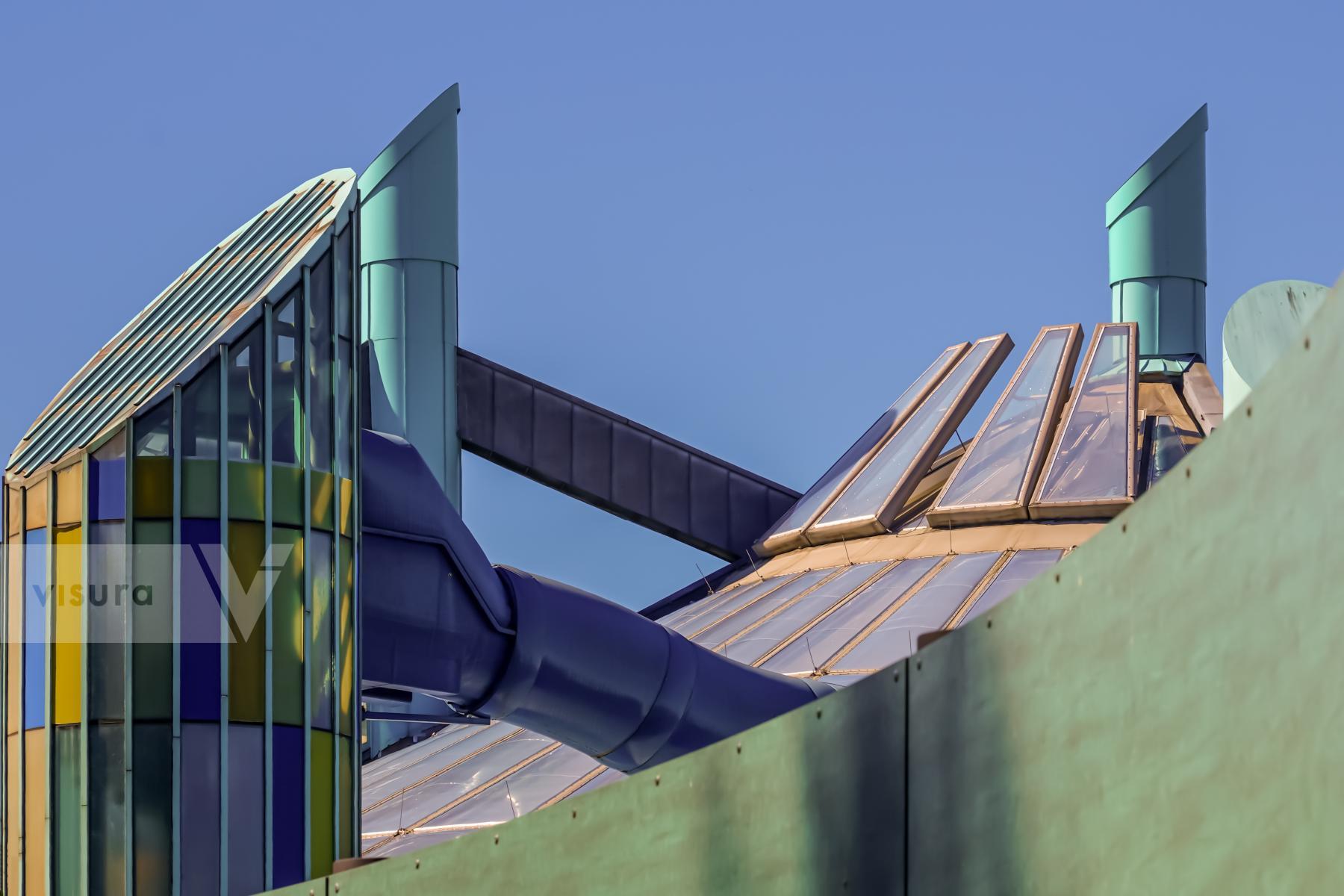
Amberg, Germany
# 3502
7/2022
Roof construction of the Kurfürstenbad, a combined outdoor and indoor swimming pool of the city of Amberg, by Glöcknerhochdrei architektur
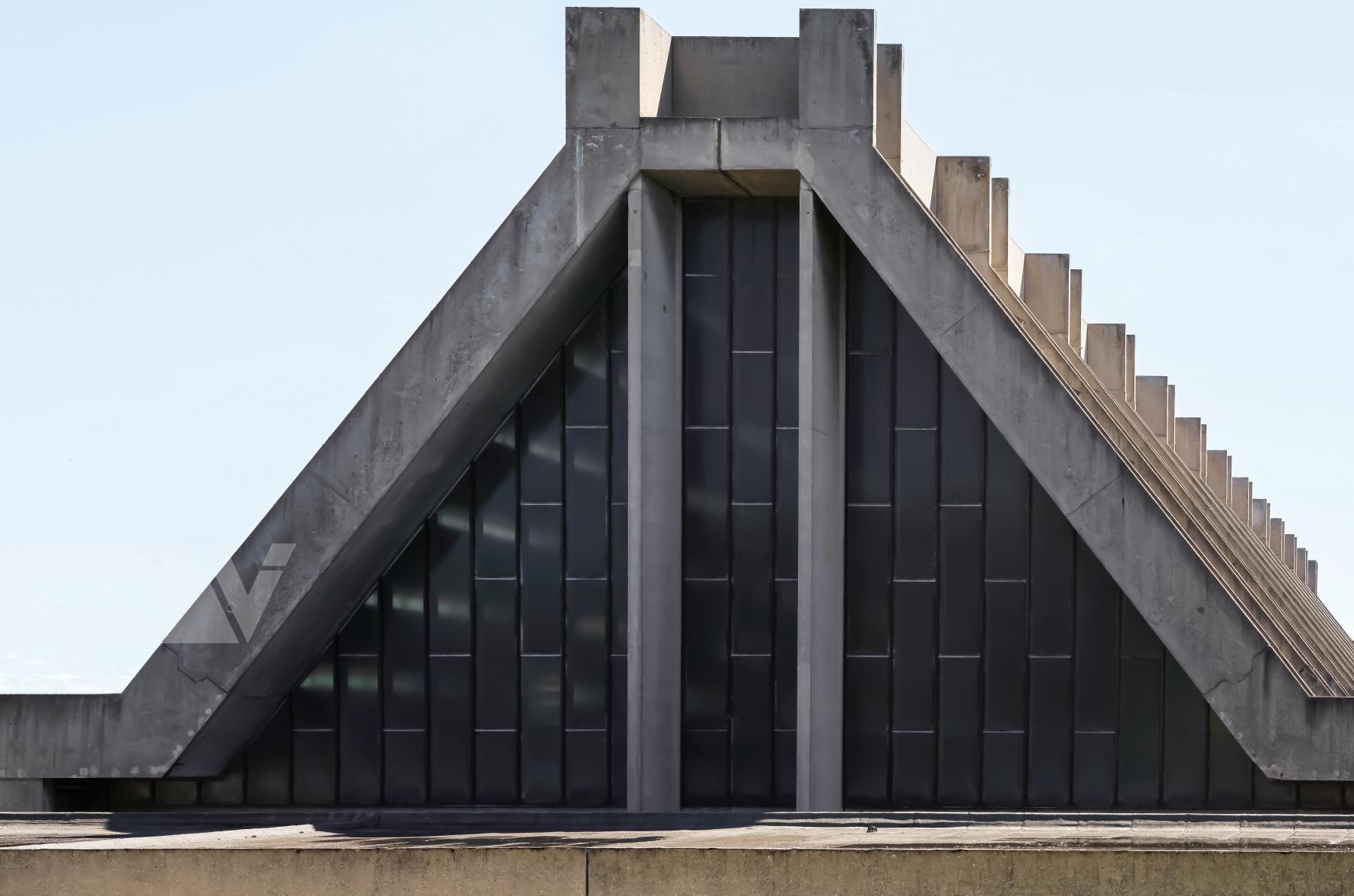
Amberg, Germany
# 3500
7/2022
The glass factory in Amberg, an industrial building is the last building of the Bauhaus founder Walter Gropius and is also officially called glass cathedral". It is the production facility of Kristall-Glasfabrik Amberg, a glass manufacturer in Amberg, Upper Palatinate. With his Glass Cathedral in Amberg, Bauhaus architect Walter Gropius created one of the most important industrial buildings of the 1960s.















































